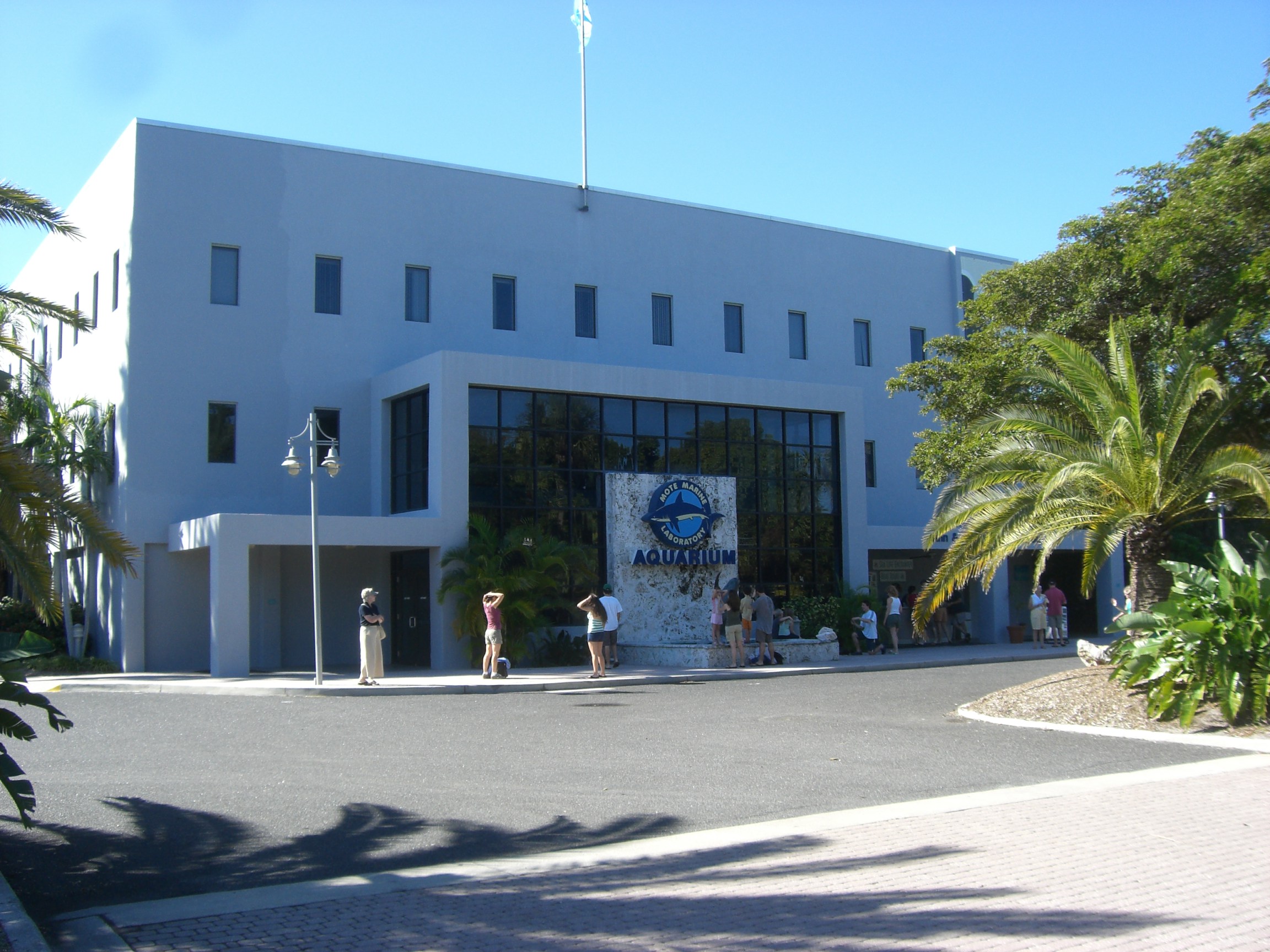
The Mote Aquarium is associated with the Mote Marine Research Laboratory, and as such has a few opportunities to view "behind the scenes". The Laboratory also allows for exhibits based on its rescue and rehab functions, showcasing rehabbed animals. Despite these unique aspects, the Aquarium is, however, simply a small, out-of-date institution.
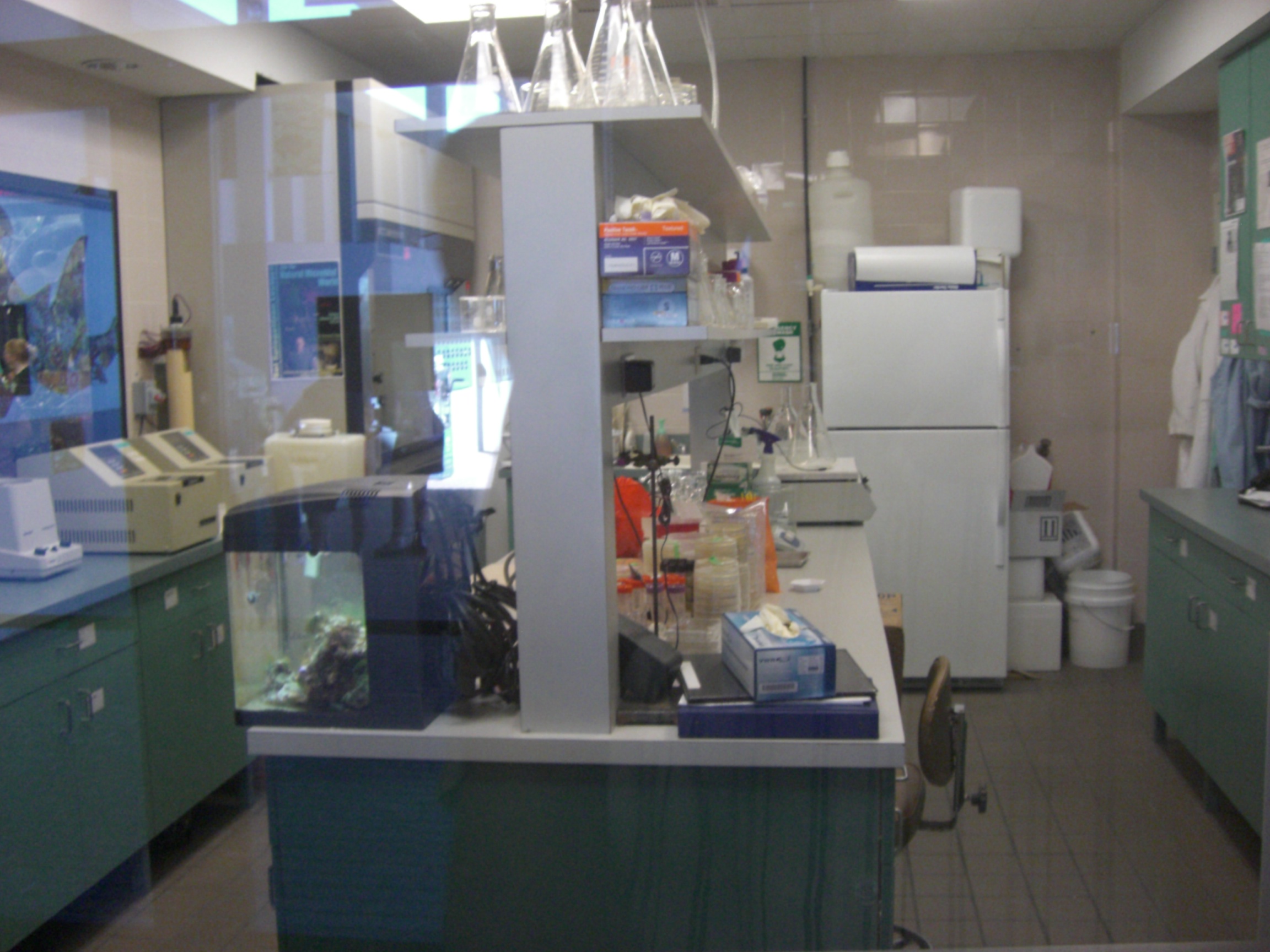
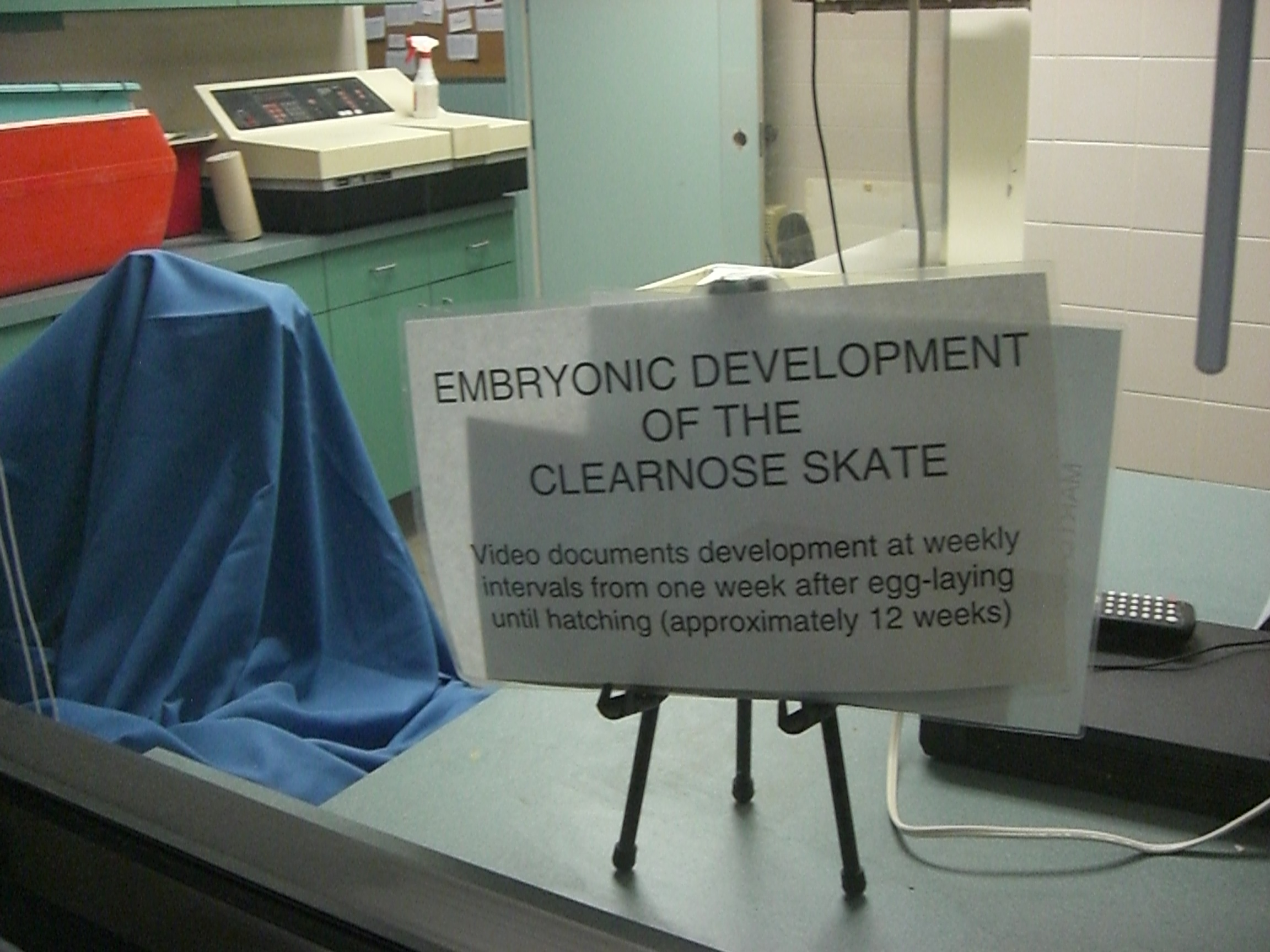
Overall, the Mote Aquarium feels incredibly sterile, with very little immersion and an amazing amount of concrete. Despite the fact that it seems reasonably clean and well maintained (exception being water quality), the Aquarium feels extremely out-of-date and generally dismal. Additionally, the Aquarium is supposedly divided into thematic or conceptual galleries, however, it is completely unclear where one area starts and another stops (except when you are lost down an endless hallway or parking lot--more on this to come).
Information, on the other hand, is overly abundant through larger than life graphic panels showing off lots of words. These panels are apparently serving as the Aquarium's theming.
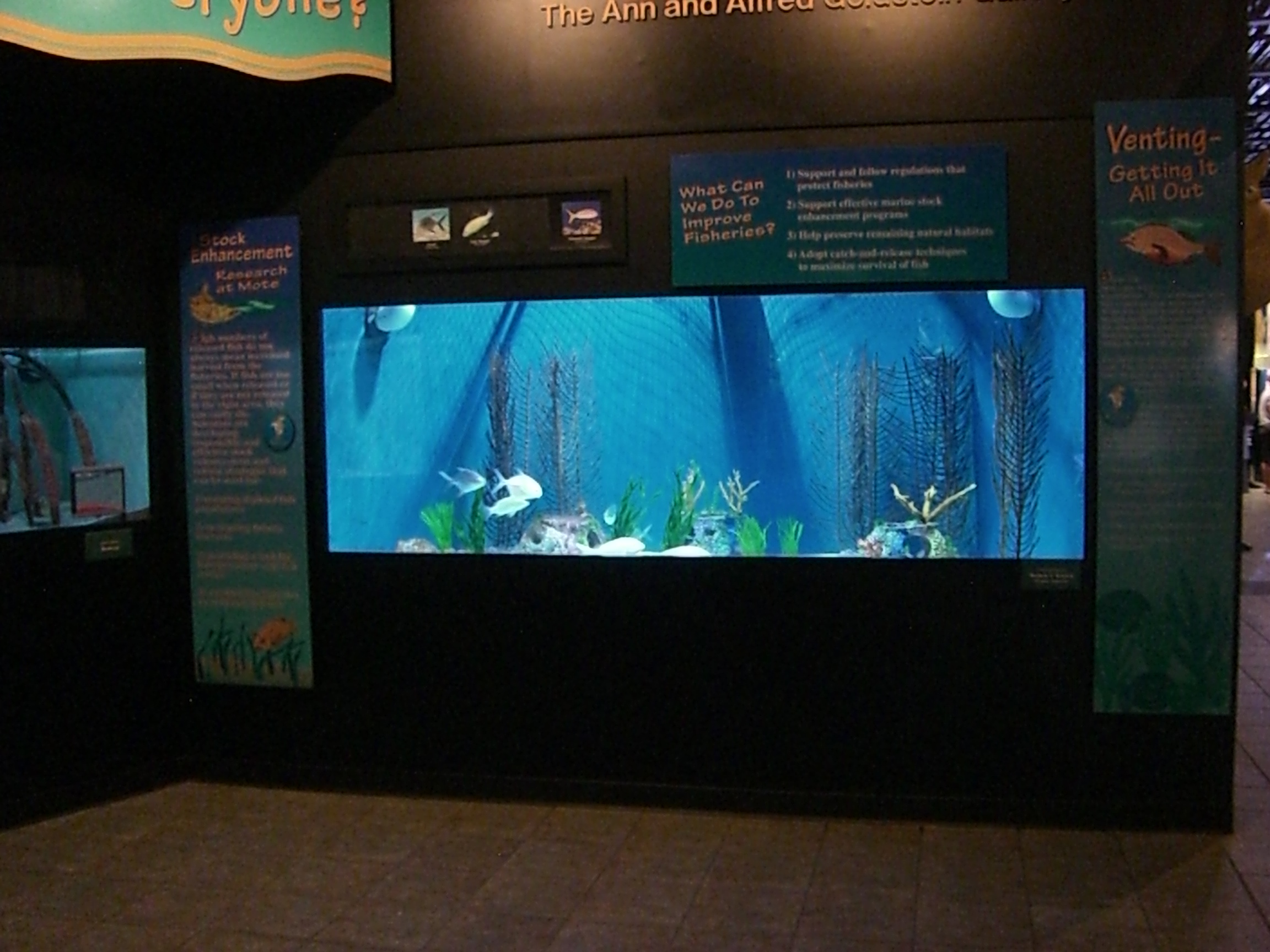
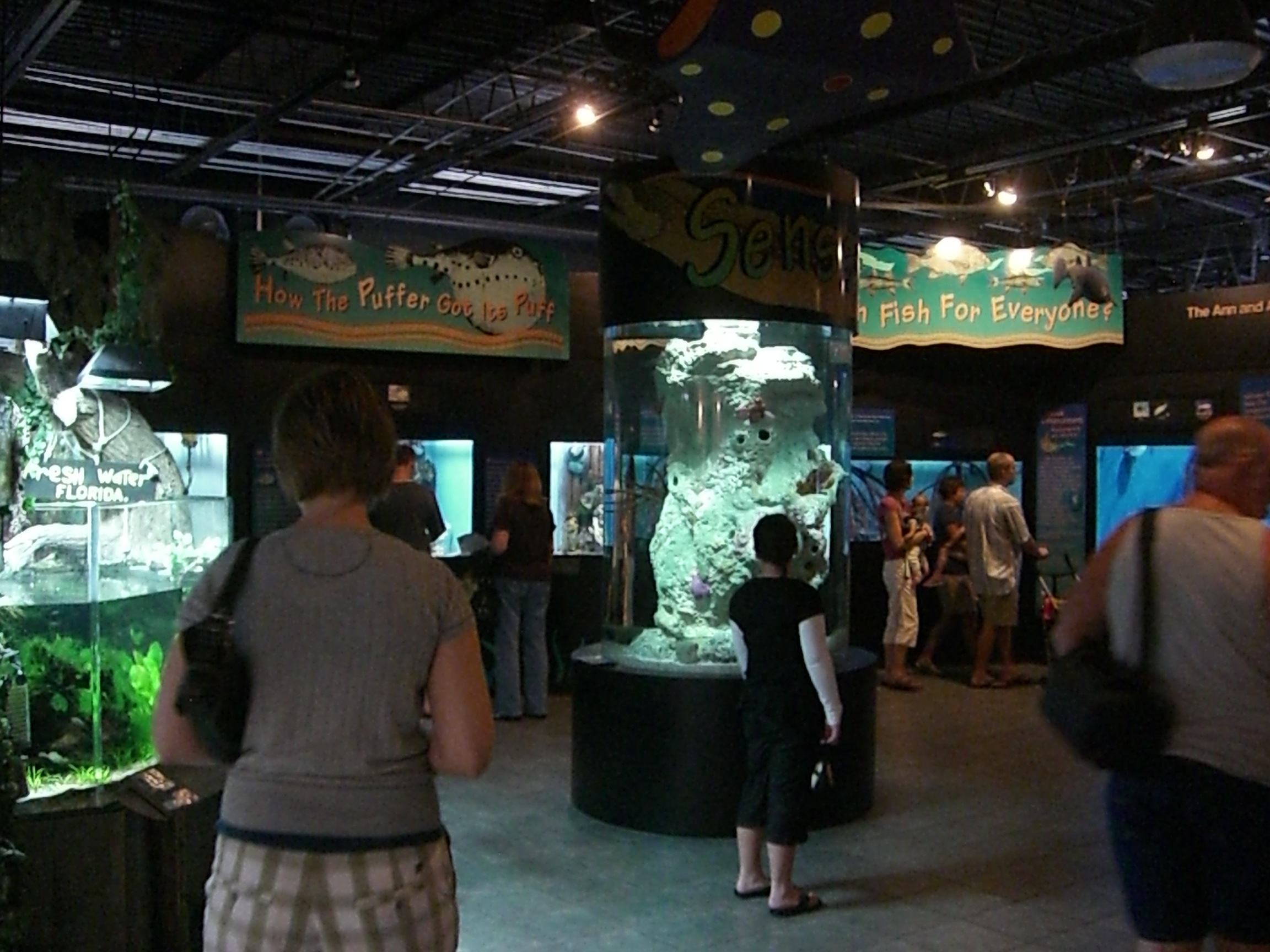
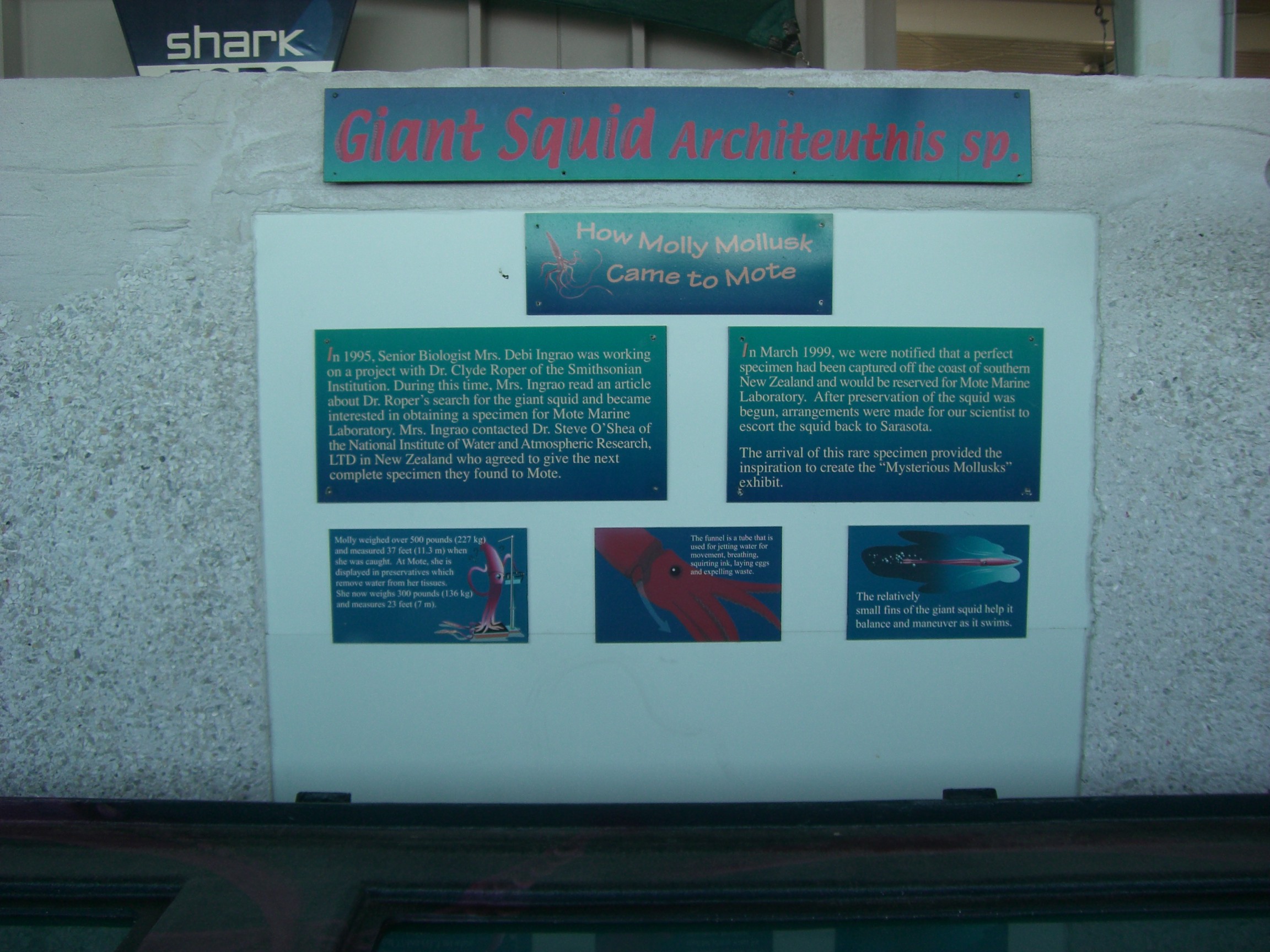
Another puzzling aspect is its division into three distinct buildings spread over a small campus. Not only is it unclear which buildings are actually associated with the Aquarium (since the parking that sits central to the campus also serves a marina and bird sanctuary), it is unclear where to even purchase tickets and begin the experience.
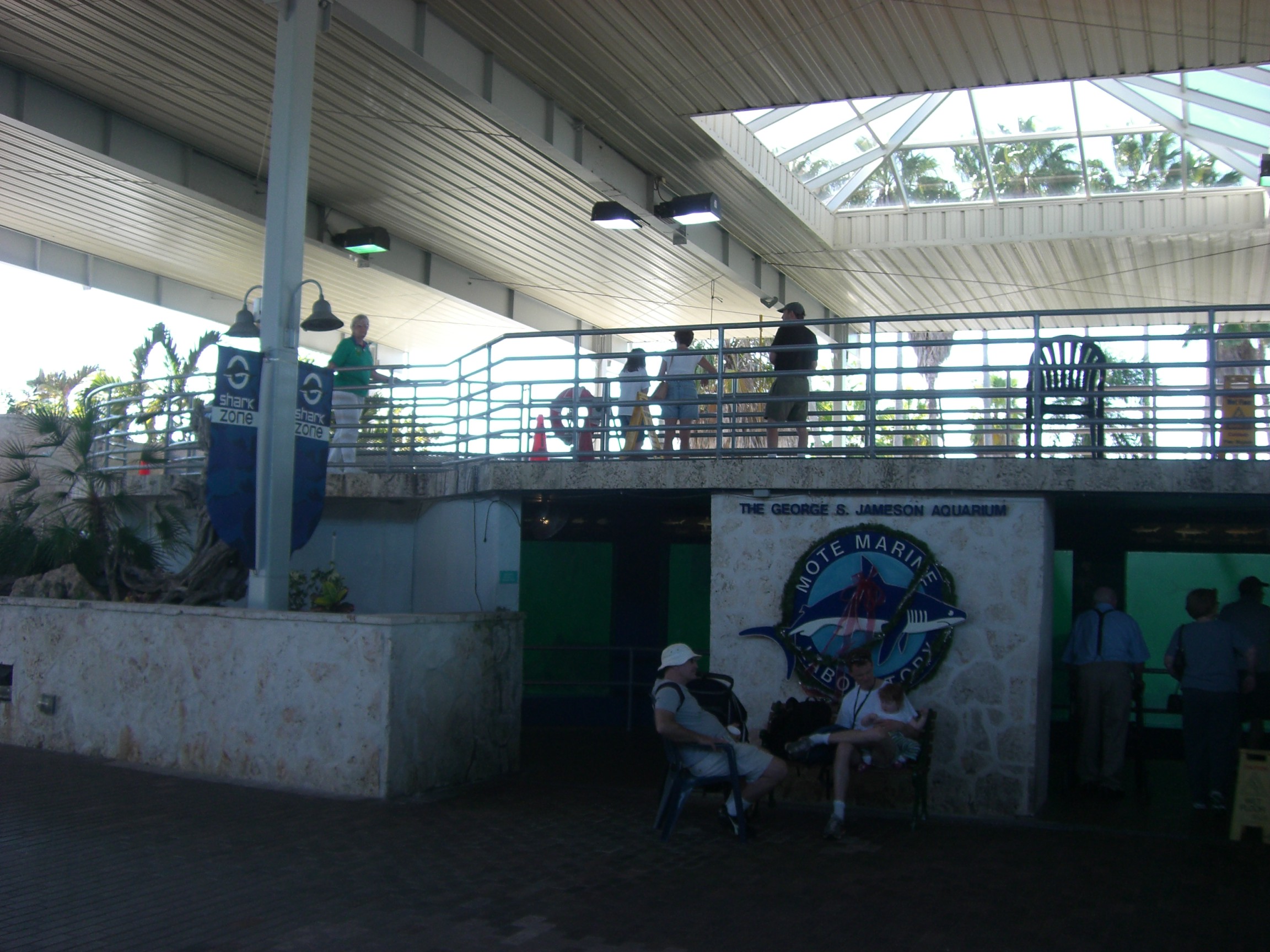
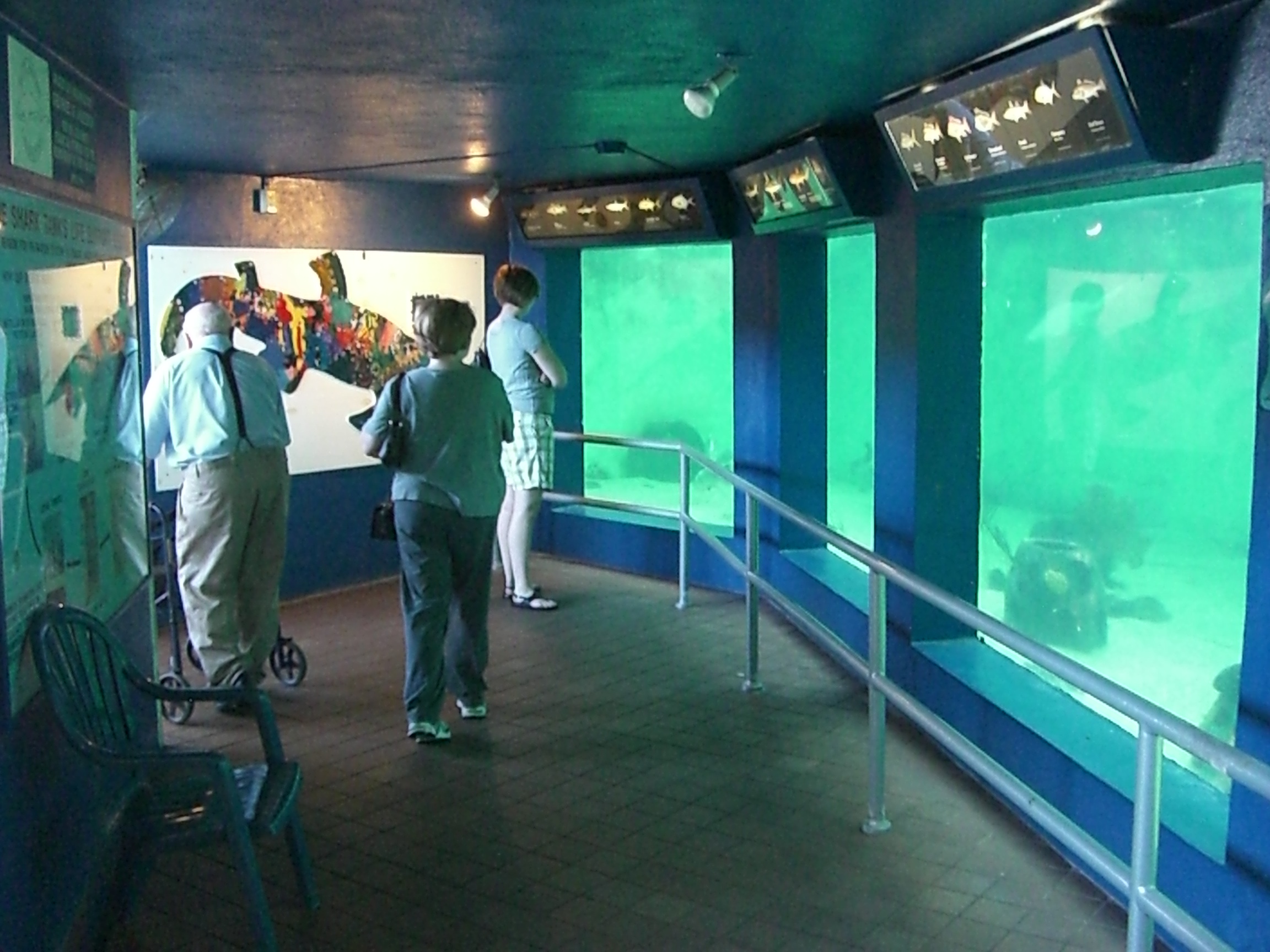
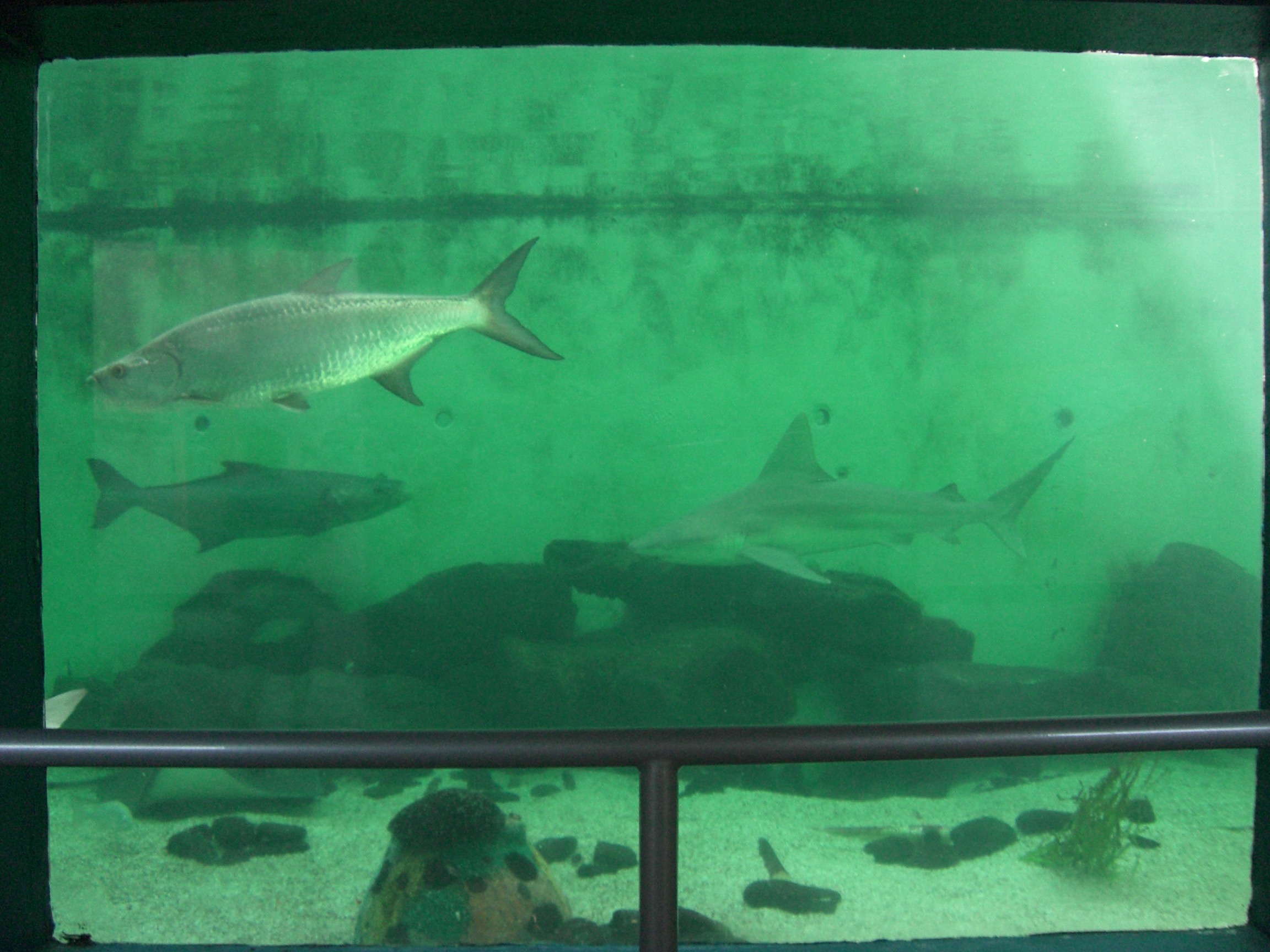
The species that should be the stand-out, hands-down star of the Aquarium, the Sharks, have two separate underwhelming tanks. I'd give the Aquarium the benefit of the doubt with the water quality in the main tank, hoping perhaps they were having an off-day, but one look into the underwater viewing shows disgusting algae and debris floating around the bottom and growing on the walls. The single underwater viewing area at this tank is horribly undersized for the amount of guests wanting to have a look and for the size of the tank. The above water viewing feels like a back-of-house area that you've accidentally stumbled upon. This covered outdoor exhibit could be very interesting with only a few changes, but as it stands currently, it is simply a sad, dirty cage.
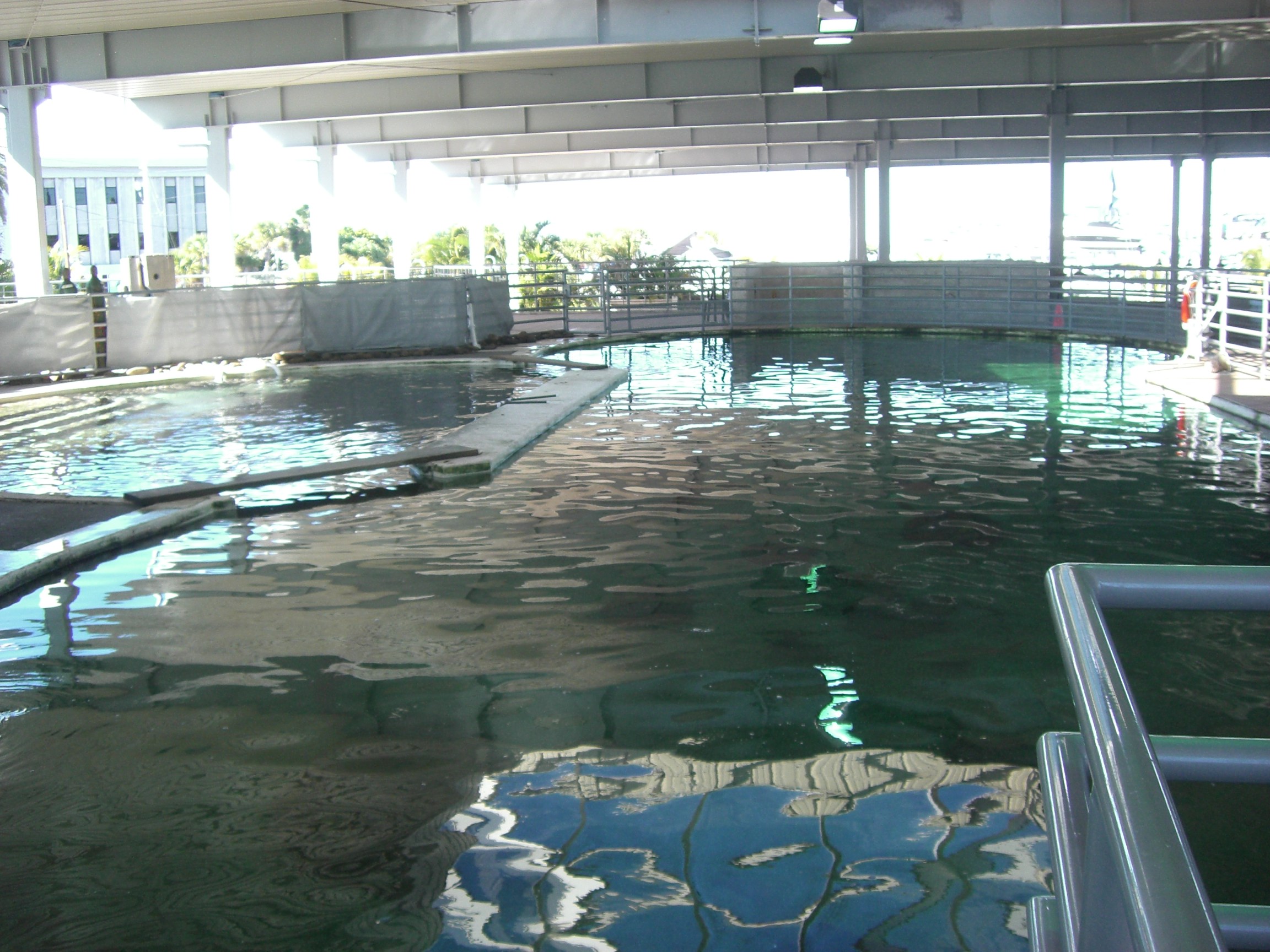
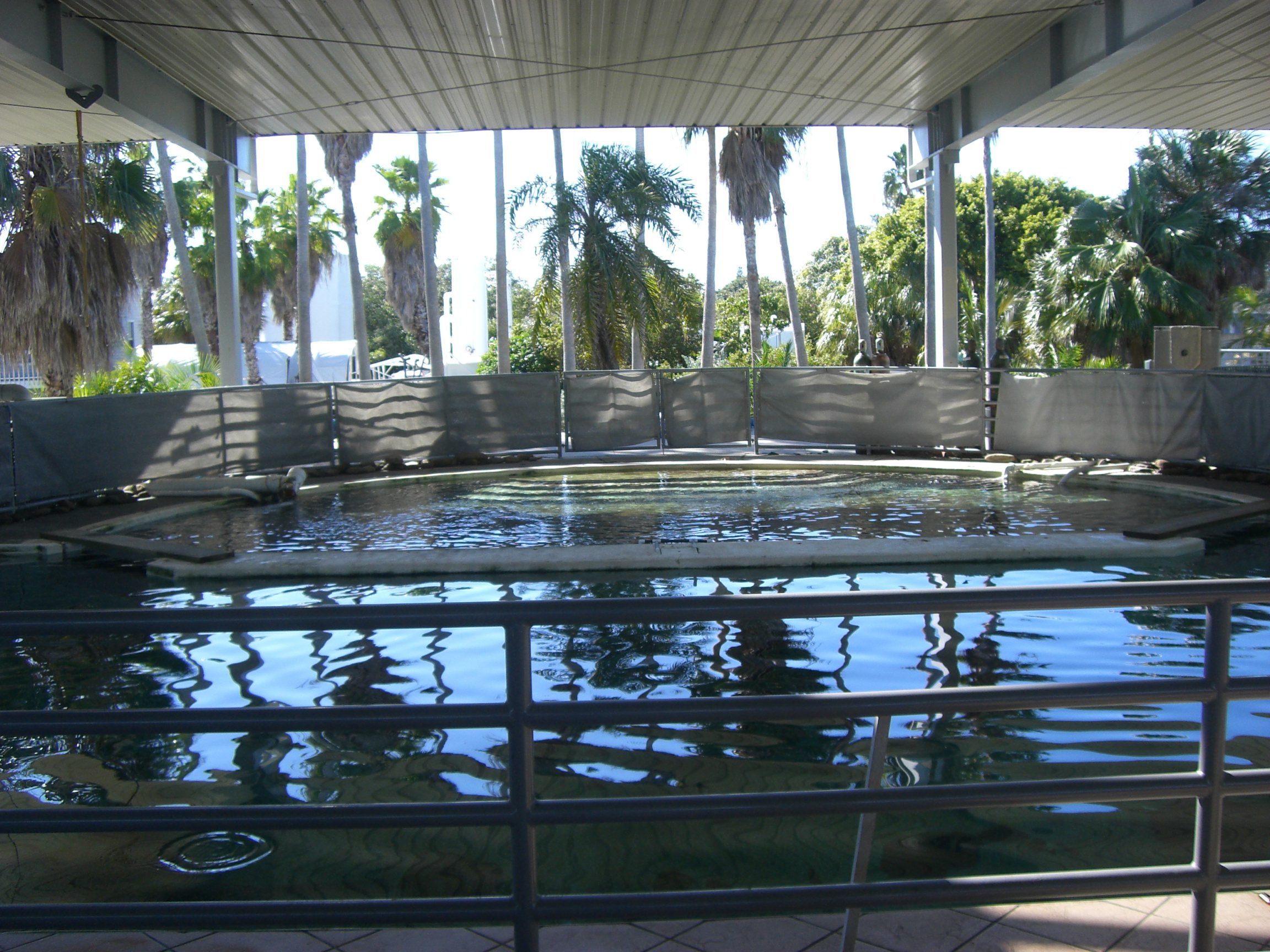
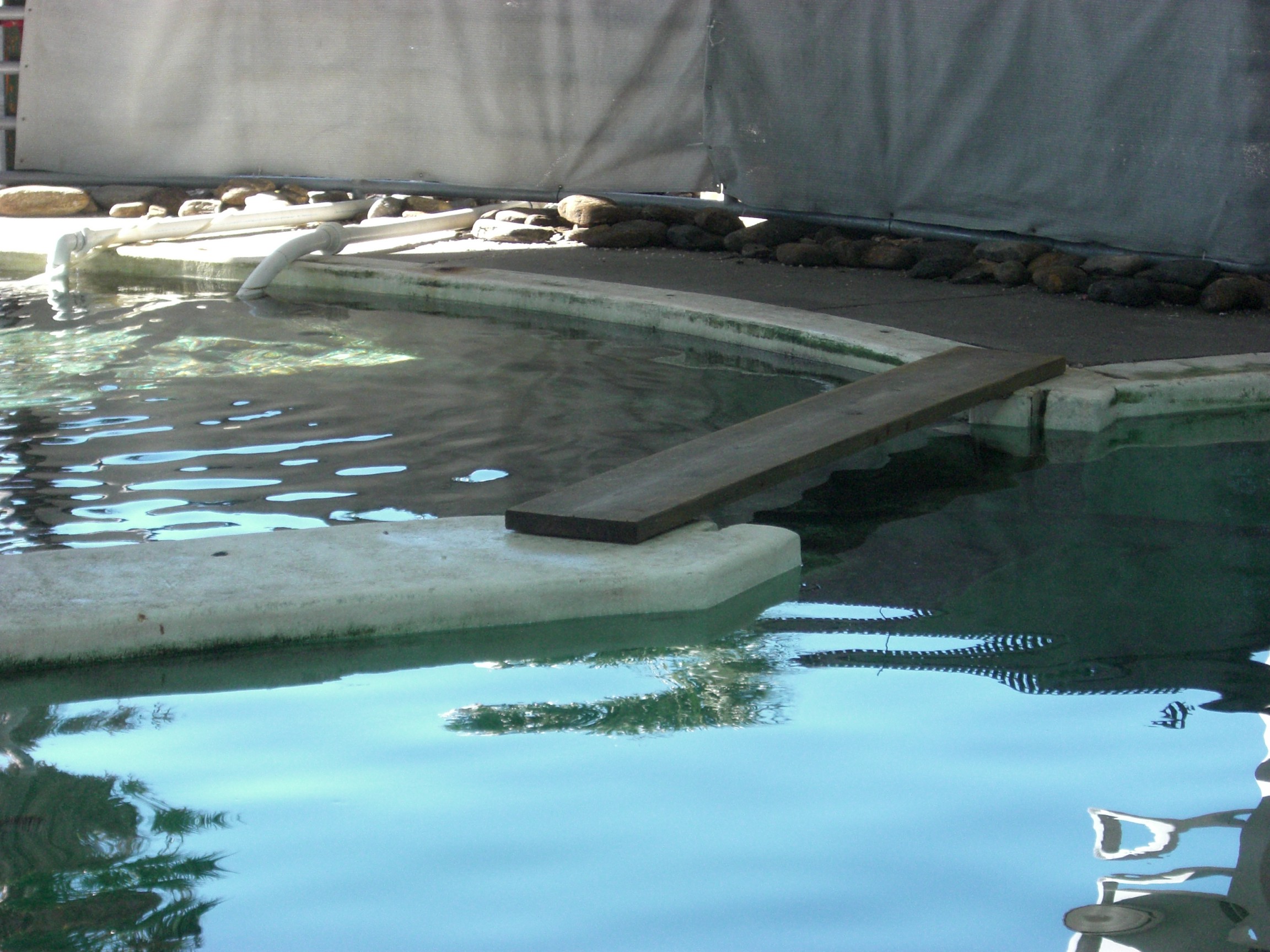
The second, much smaller shark tank has much higher water quality, and an attempt at rockwork and coral. This is completely undermined by the sad state of the coral, however, as it appears to have been rubber stamped across the tank; only one kind of artificial coral was used, and the attachment points are painfully obvious. Additionally, the lovely sandy bottom seems to have been over taken by invasive plastic marine plants.
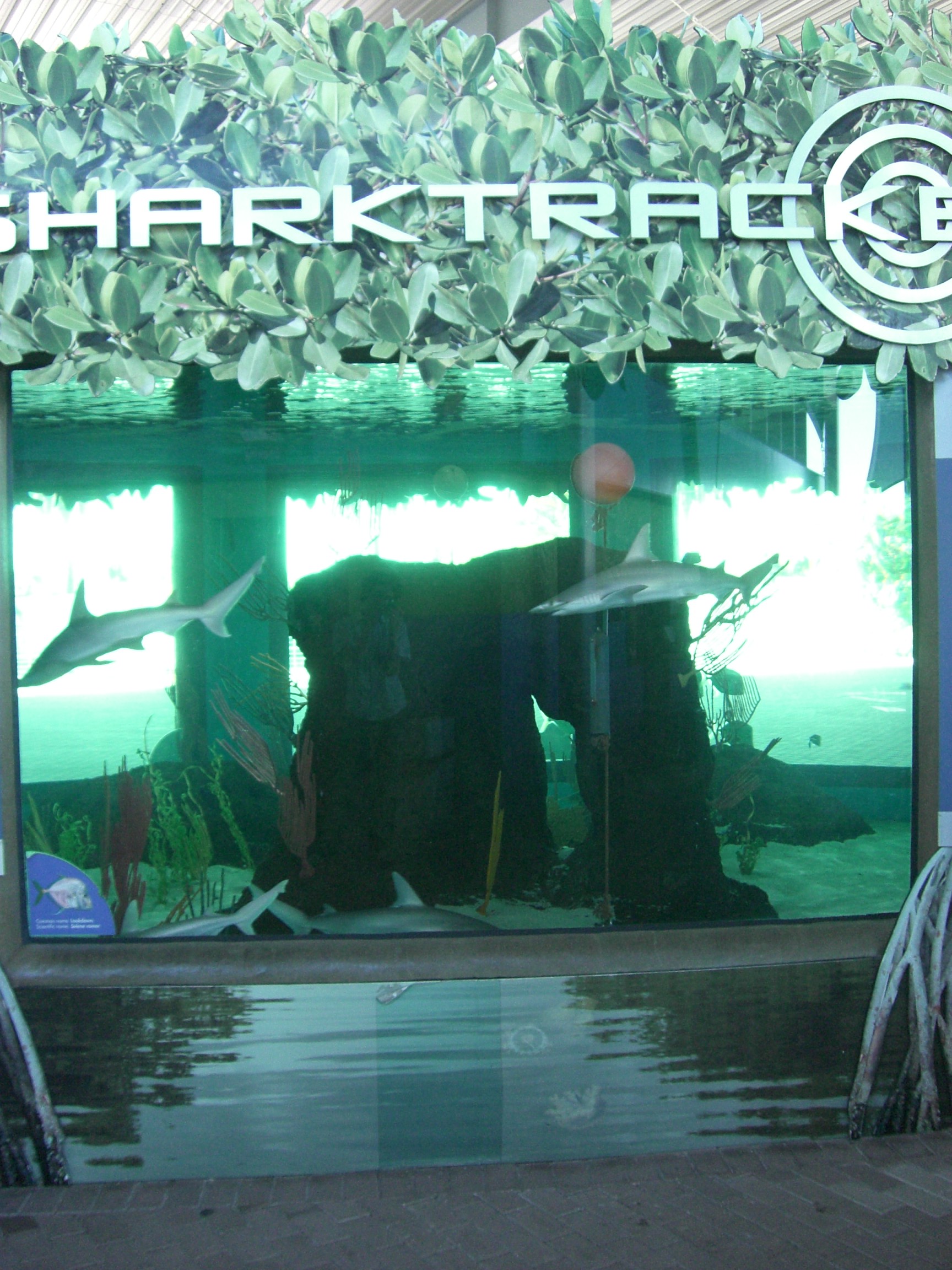
- Smaller Shark Tank
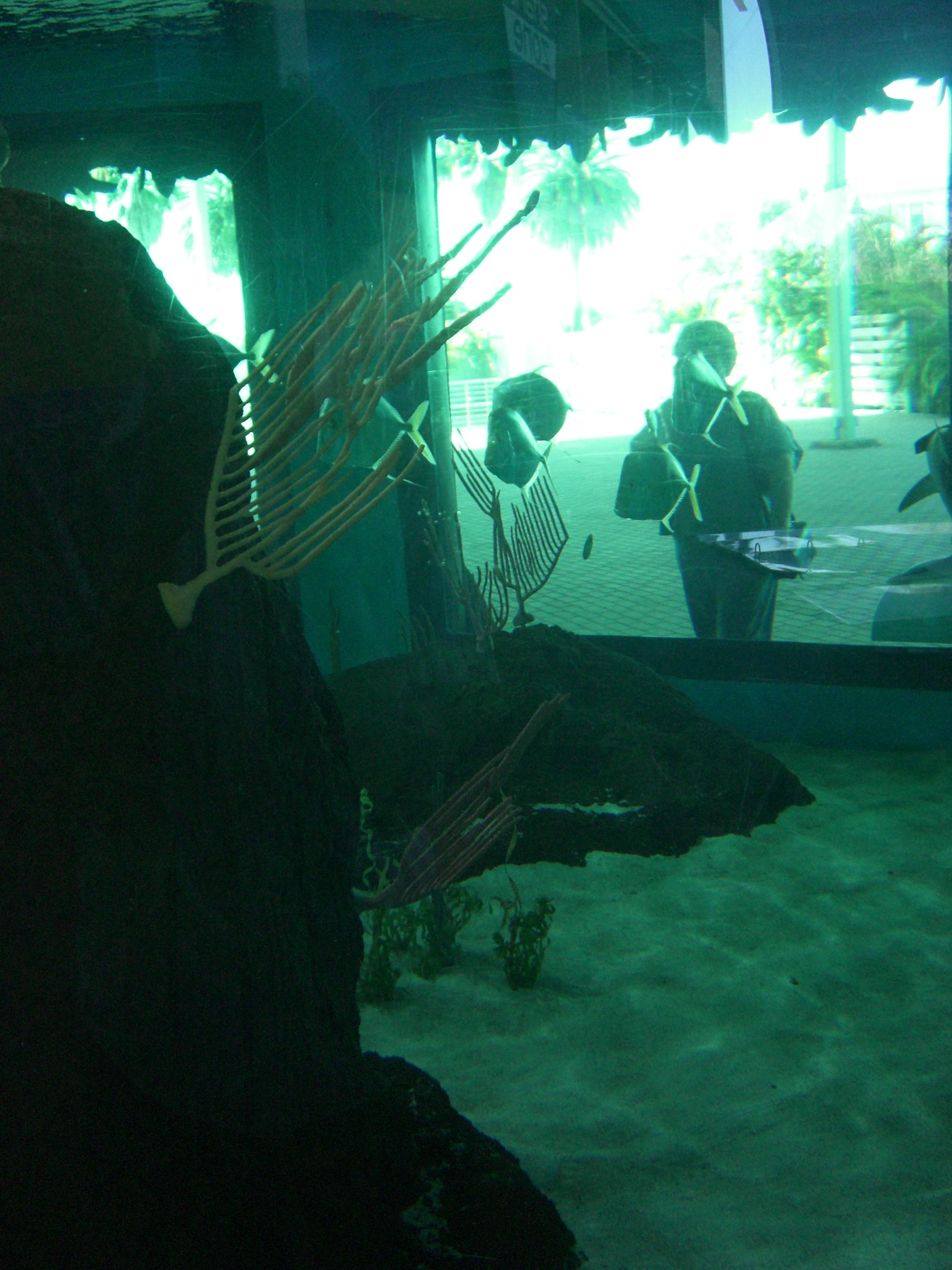
- Plastic coral and plants
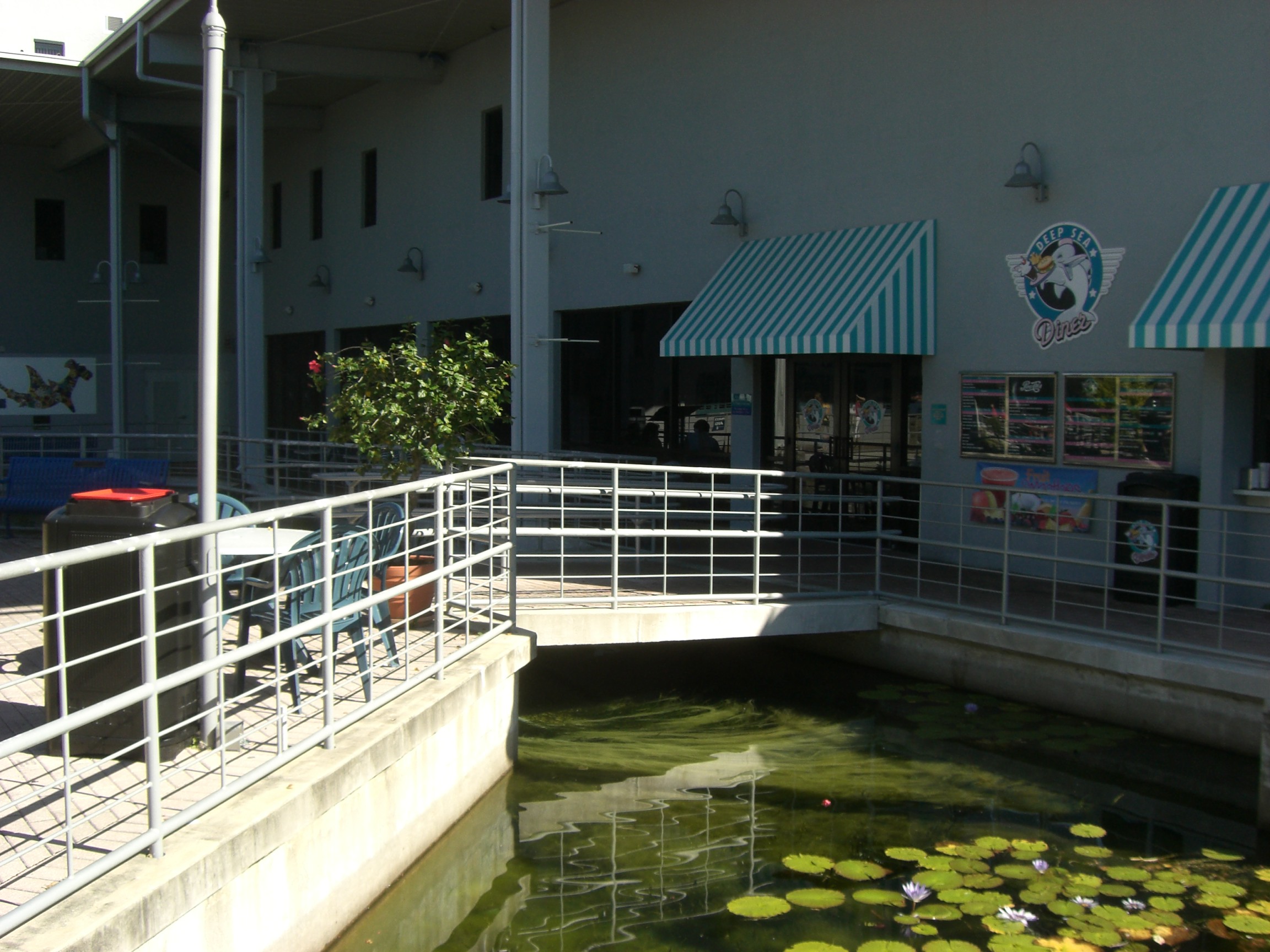
After finding our way through building one, housing the sharks and several smaller tanks, the gift shop and the kitschy 50s restaurant, we found ourselves back in the parking lot, wondering how to find the sea turtles, manatee, and dolphins. After wandering around the parking lot for a while, we finally notice sea turtles and manatees painted onto the pavement, subtly guiding us across a busy street and into another building.
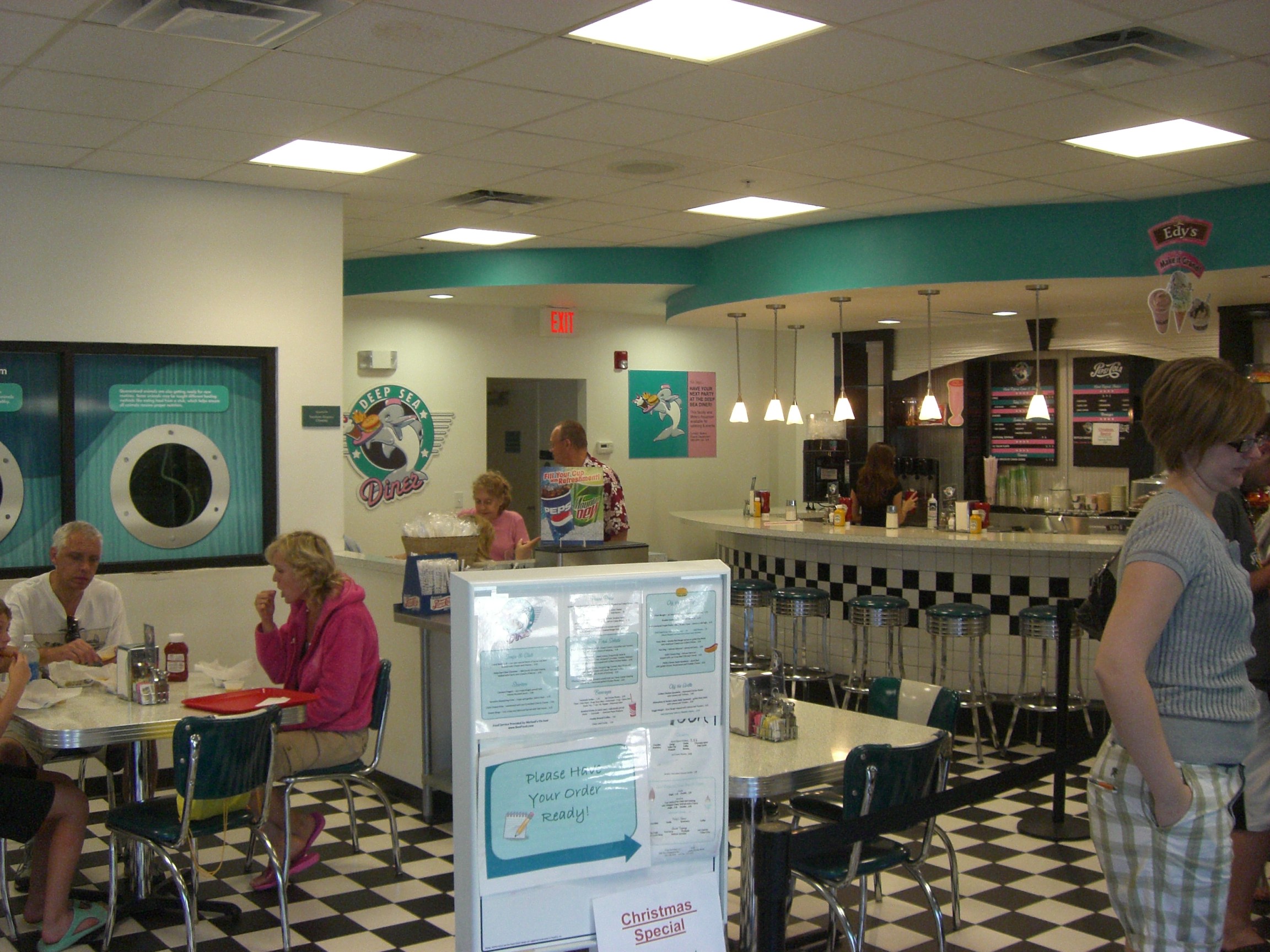
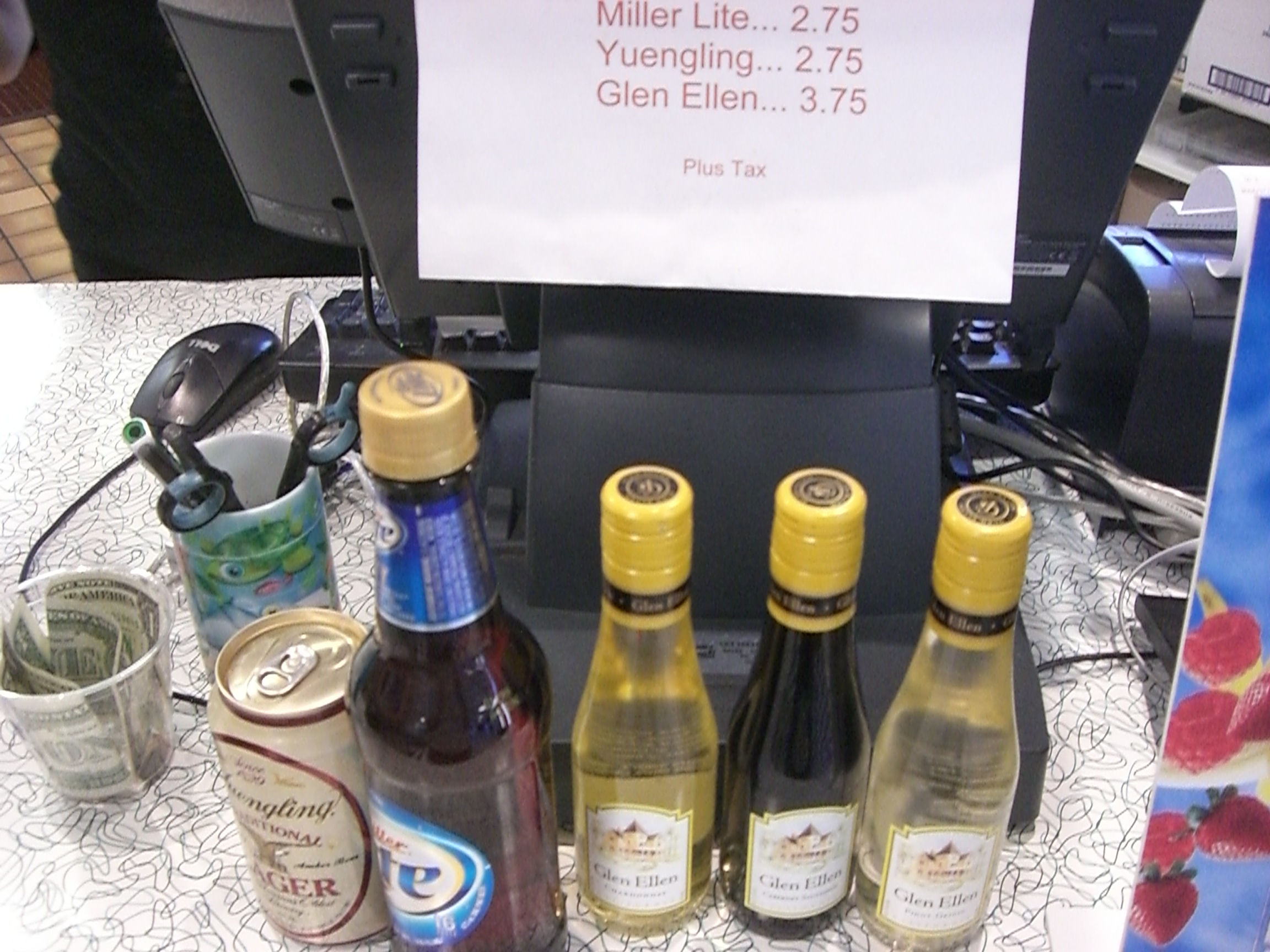
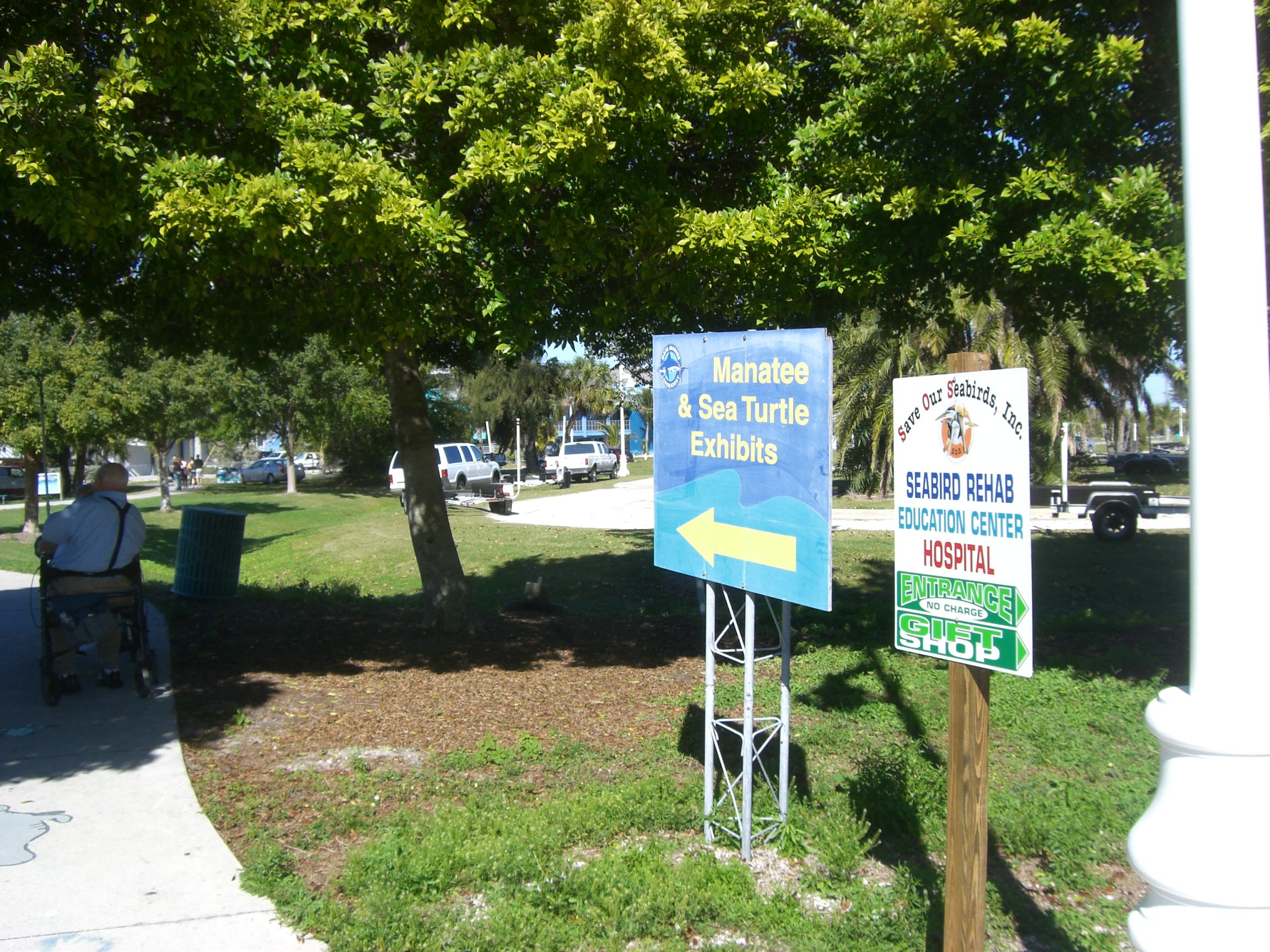
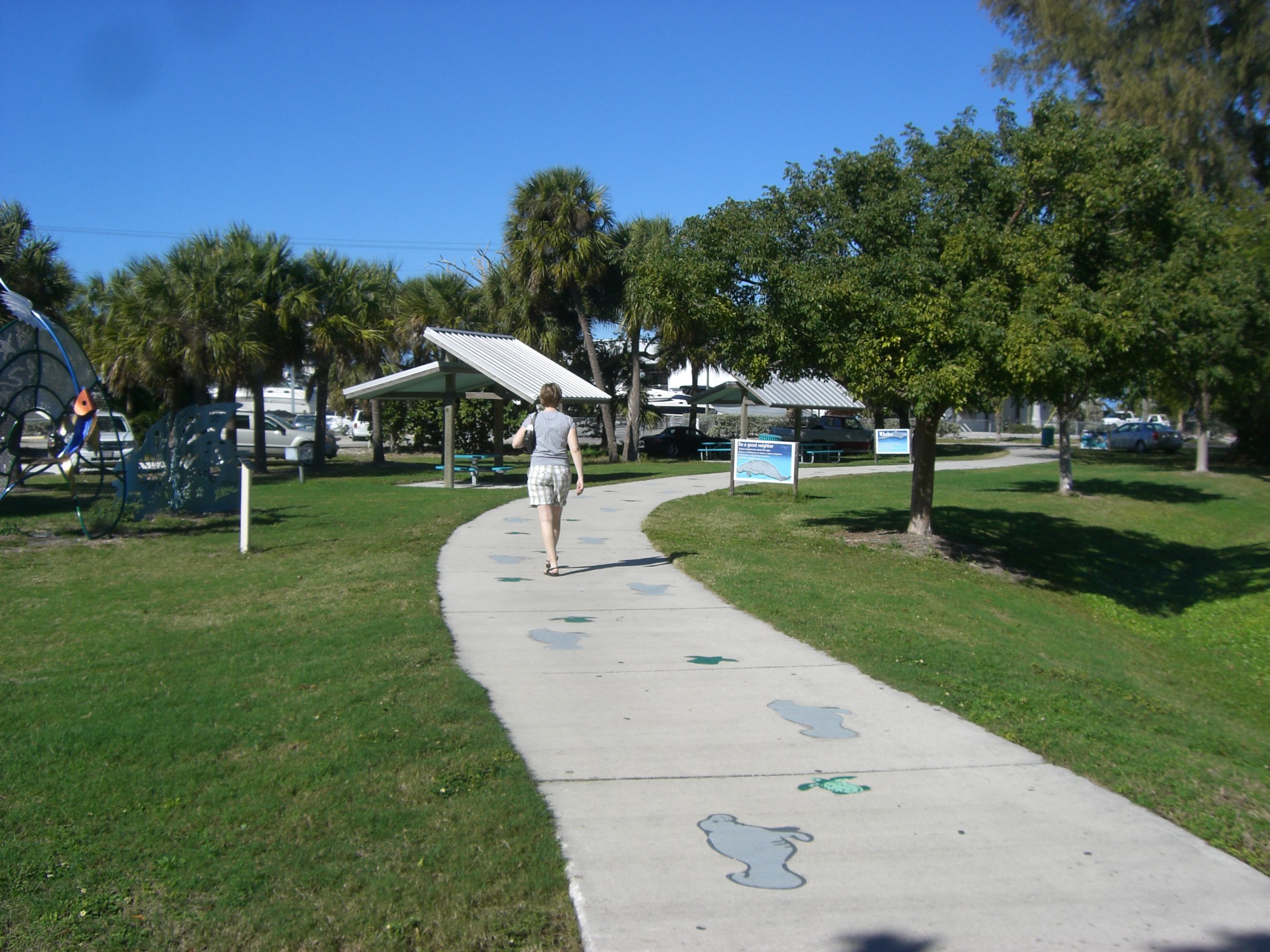
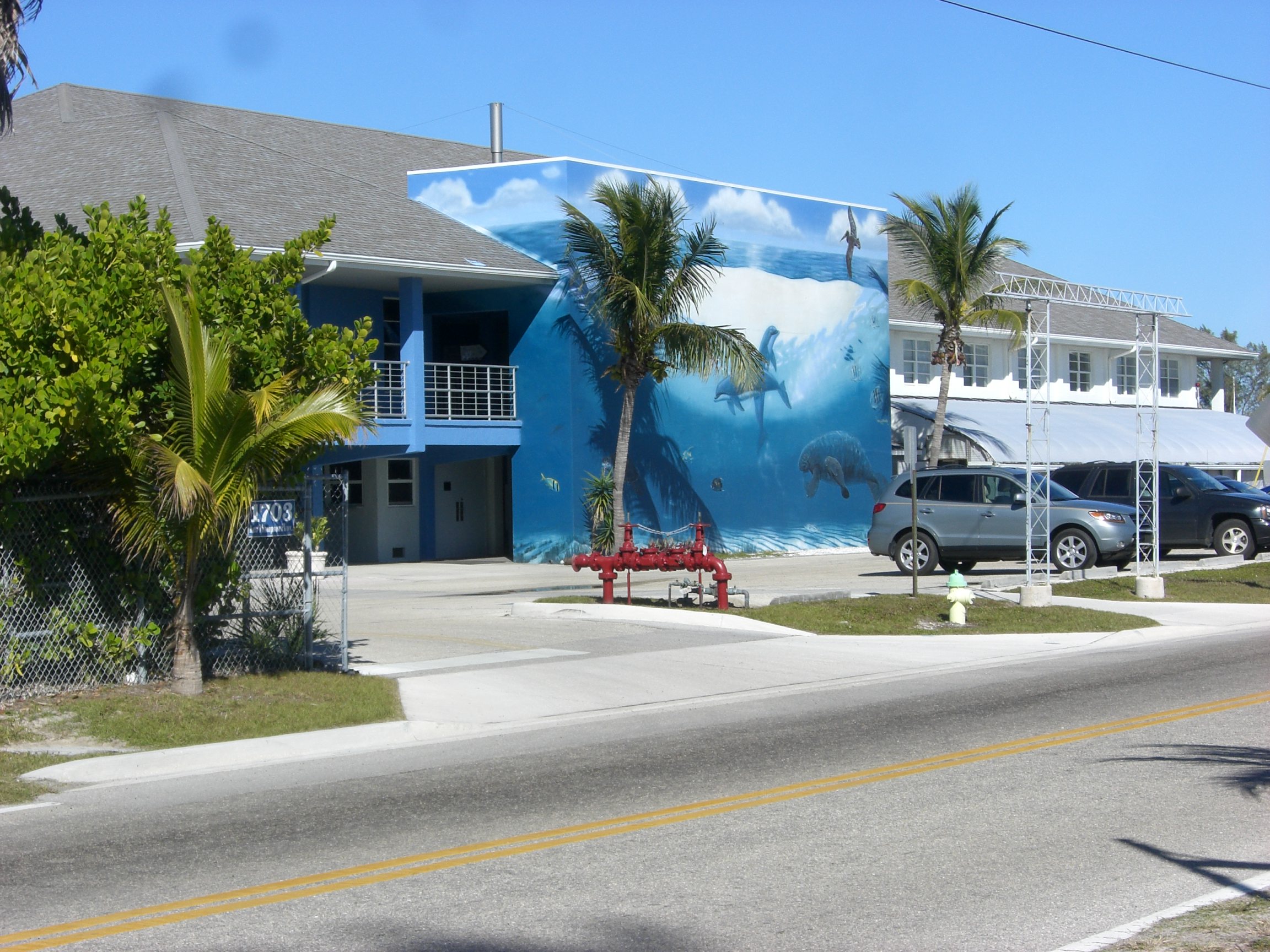
Here, we find a confusing mess of hallways and outdoor breezeways, and somehow manage to stumble upon the last few minutes of the dolphin show. This show is an informal educational demonstration, but attracts hundreds of people, crammed around the metal railing of the rectangular pool.
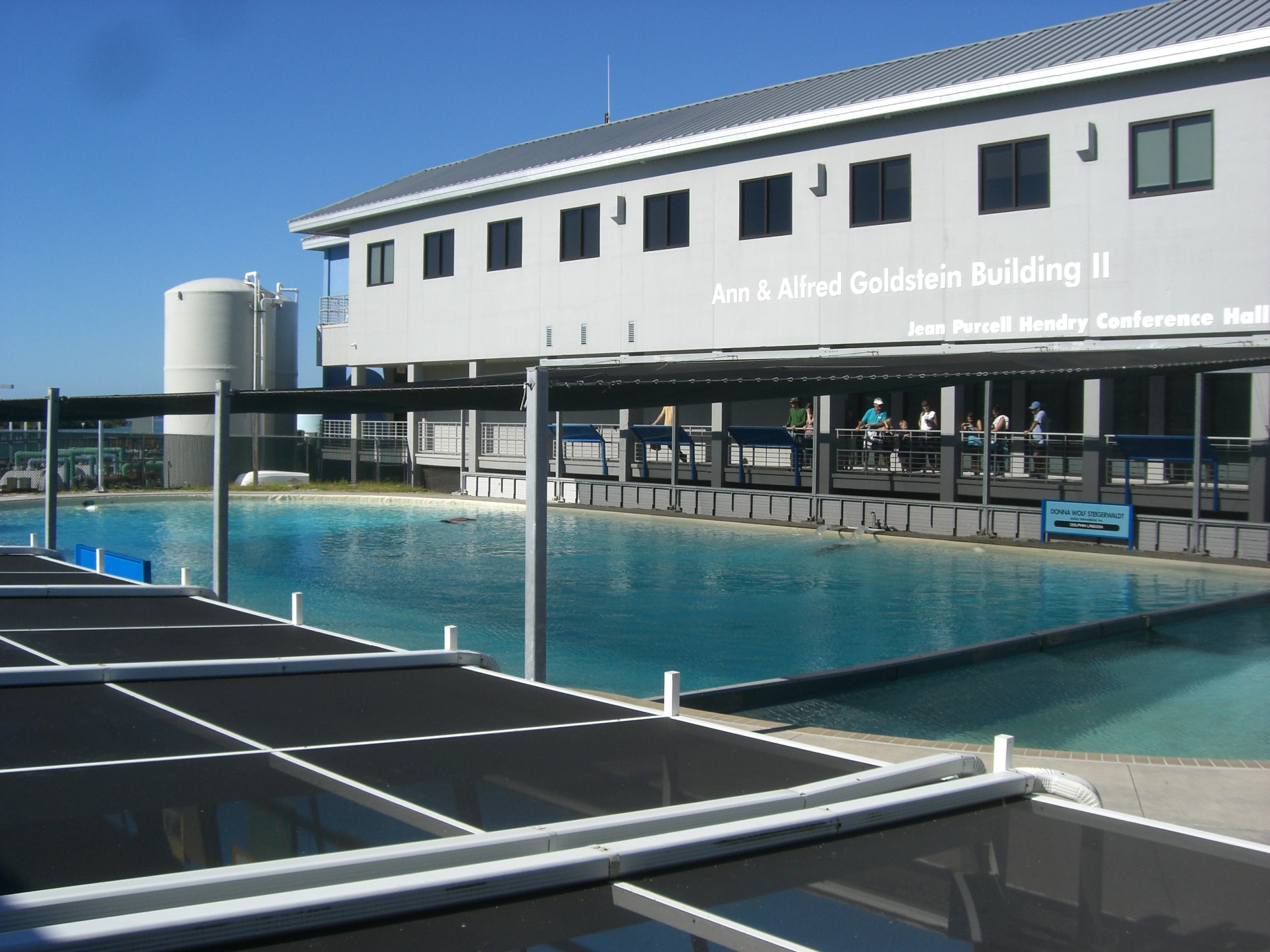
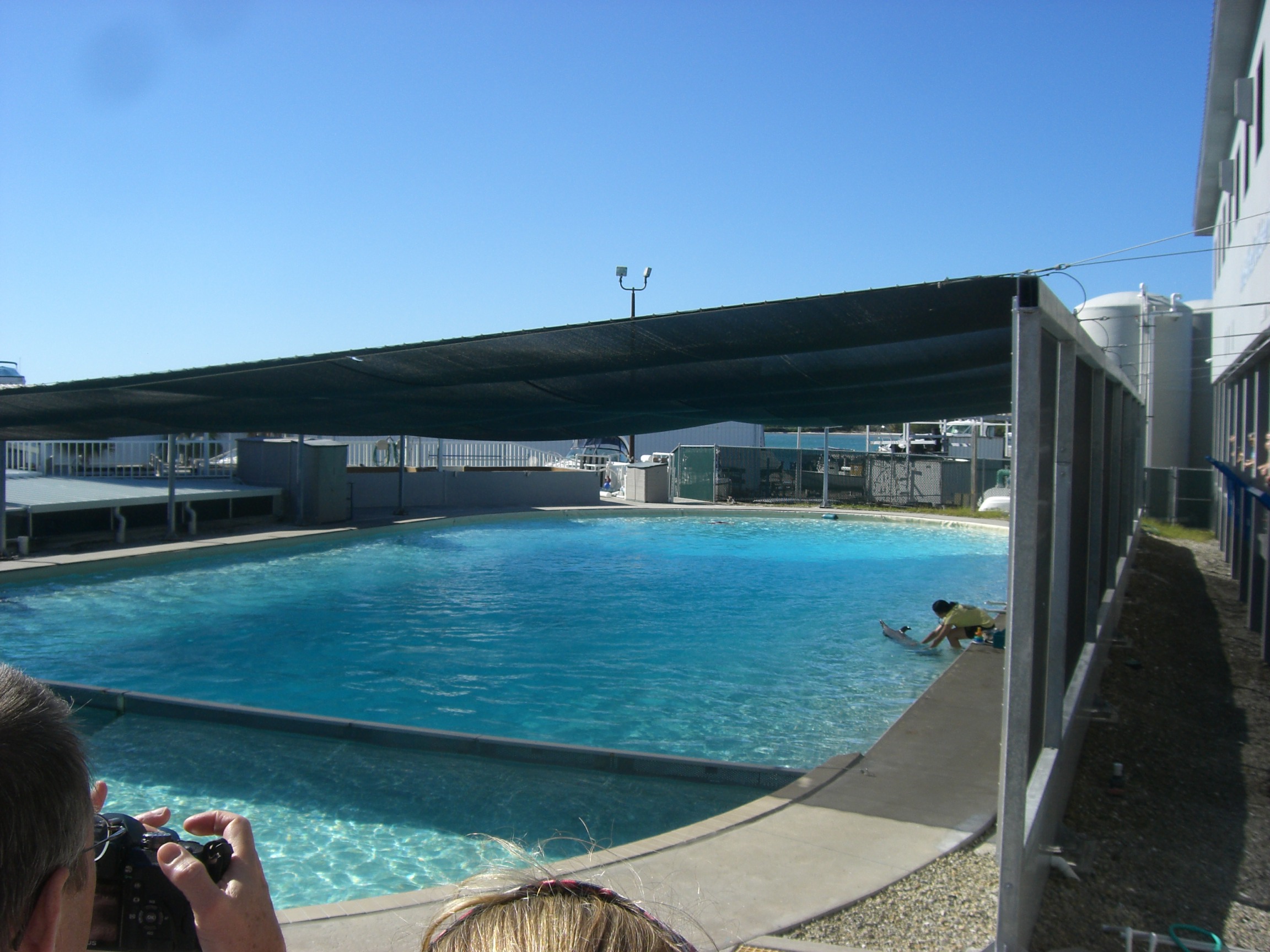
From what we saw, the dolphins demonstrate simple behaviors as an illustration of the training techniques used by the Aquarium. After the show, we walked aimlessly around trying find an actual exhibit for the dolphins, or at least an underwater viewing panel. Unfortunately, none was to be found.
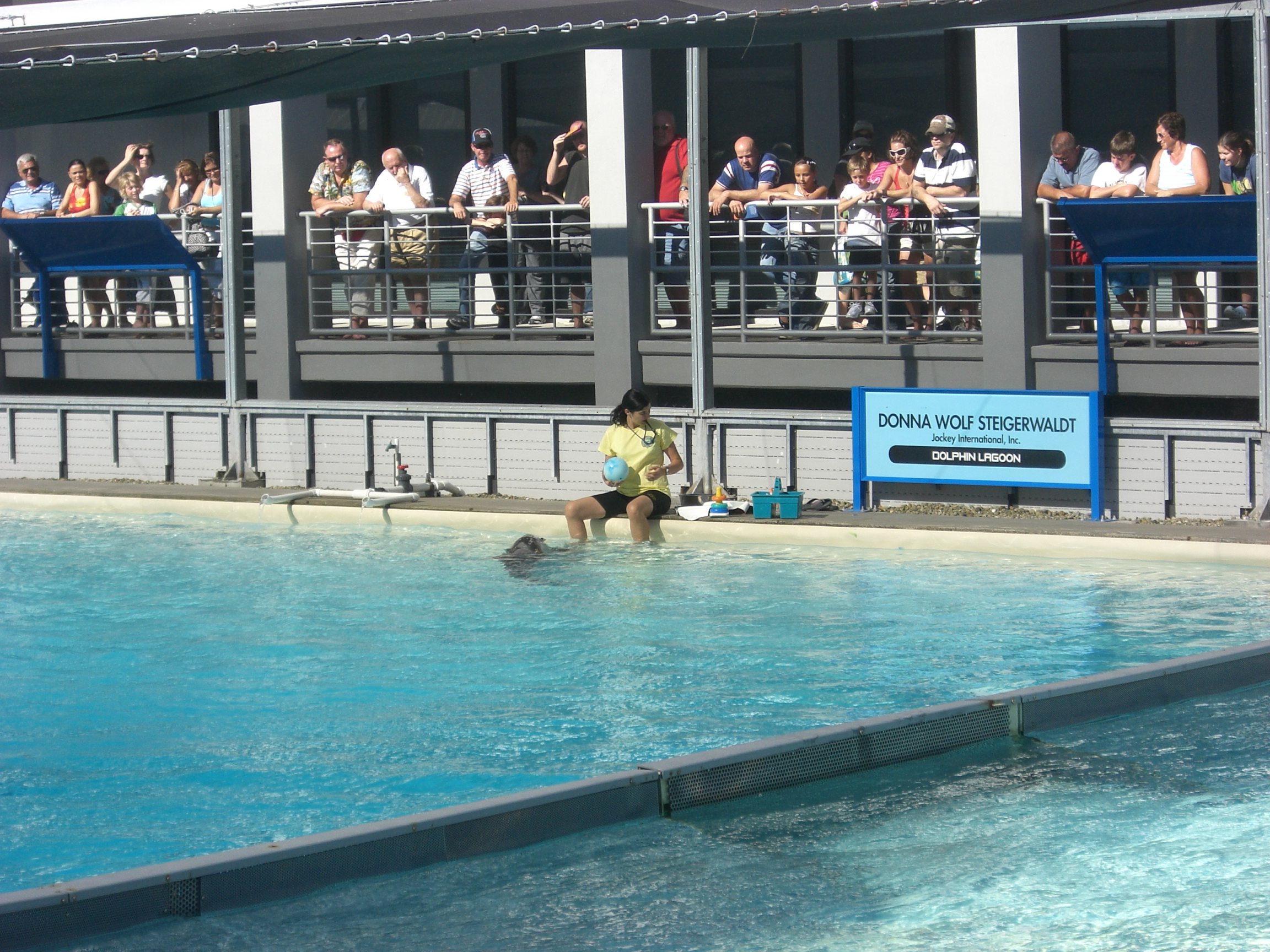
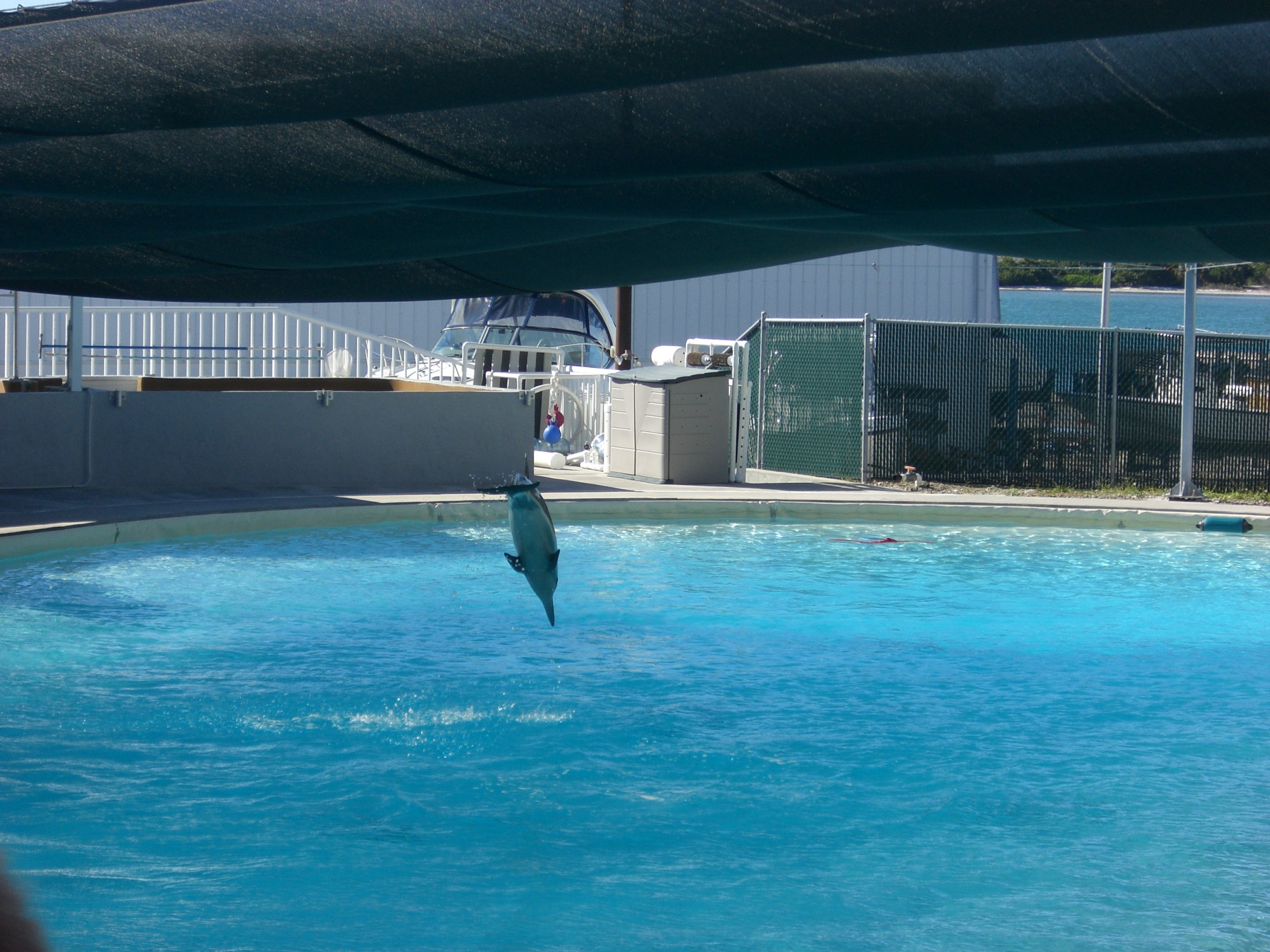
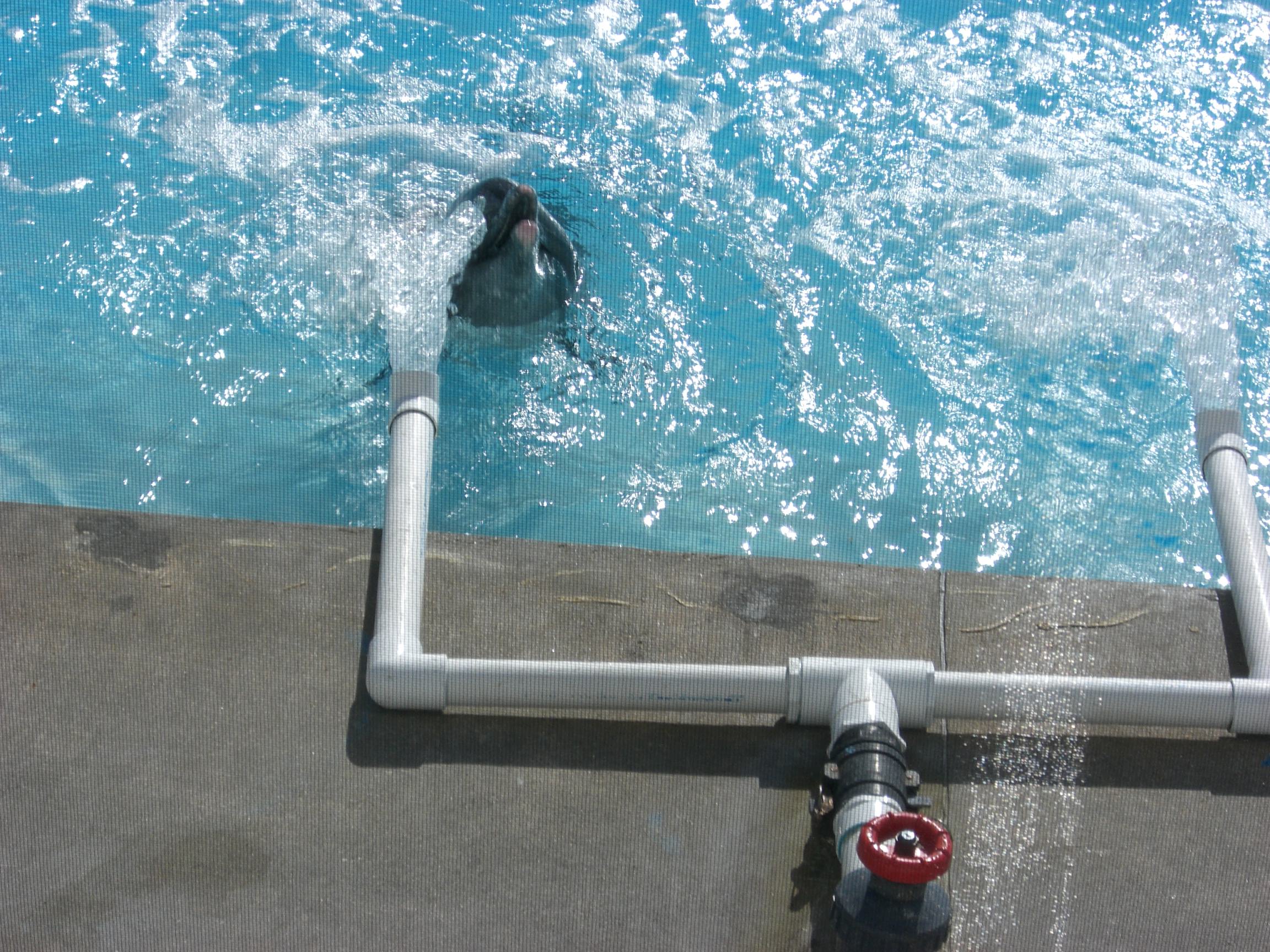
This building also houses the sea turtle rehab tanks which are about as exciting as they sound. Several elevated concrete tanks are squeezed into a small room, carefully watched over by several docents. A friendly sign across the room indicated the sea turtles are getting a new home, however, as a new sea turtle exhibit is currently being built. I'd like to get back to see that, as it seems it will be the only new exhibit built at this Aquarium in years.
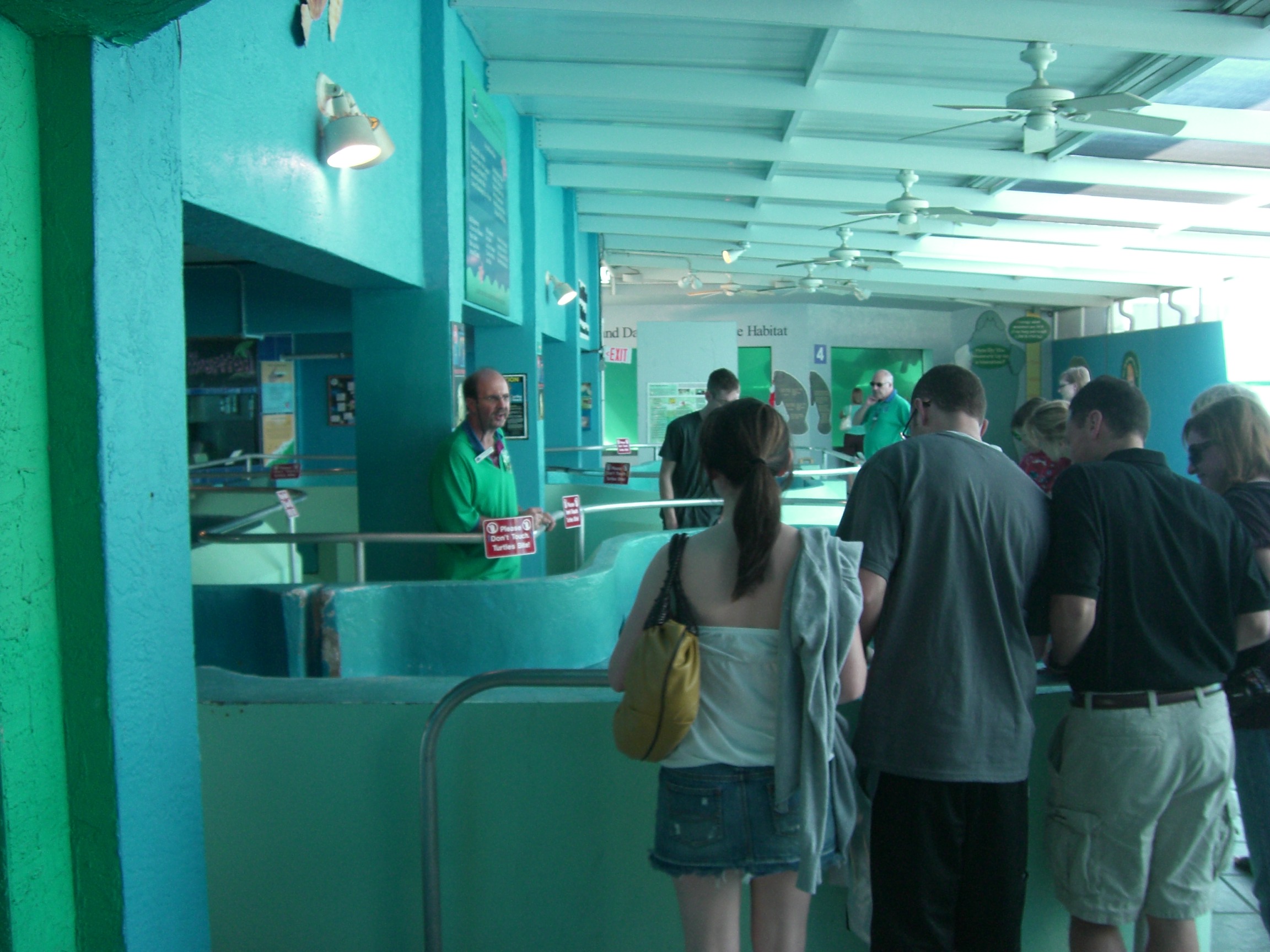
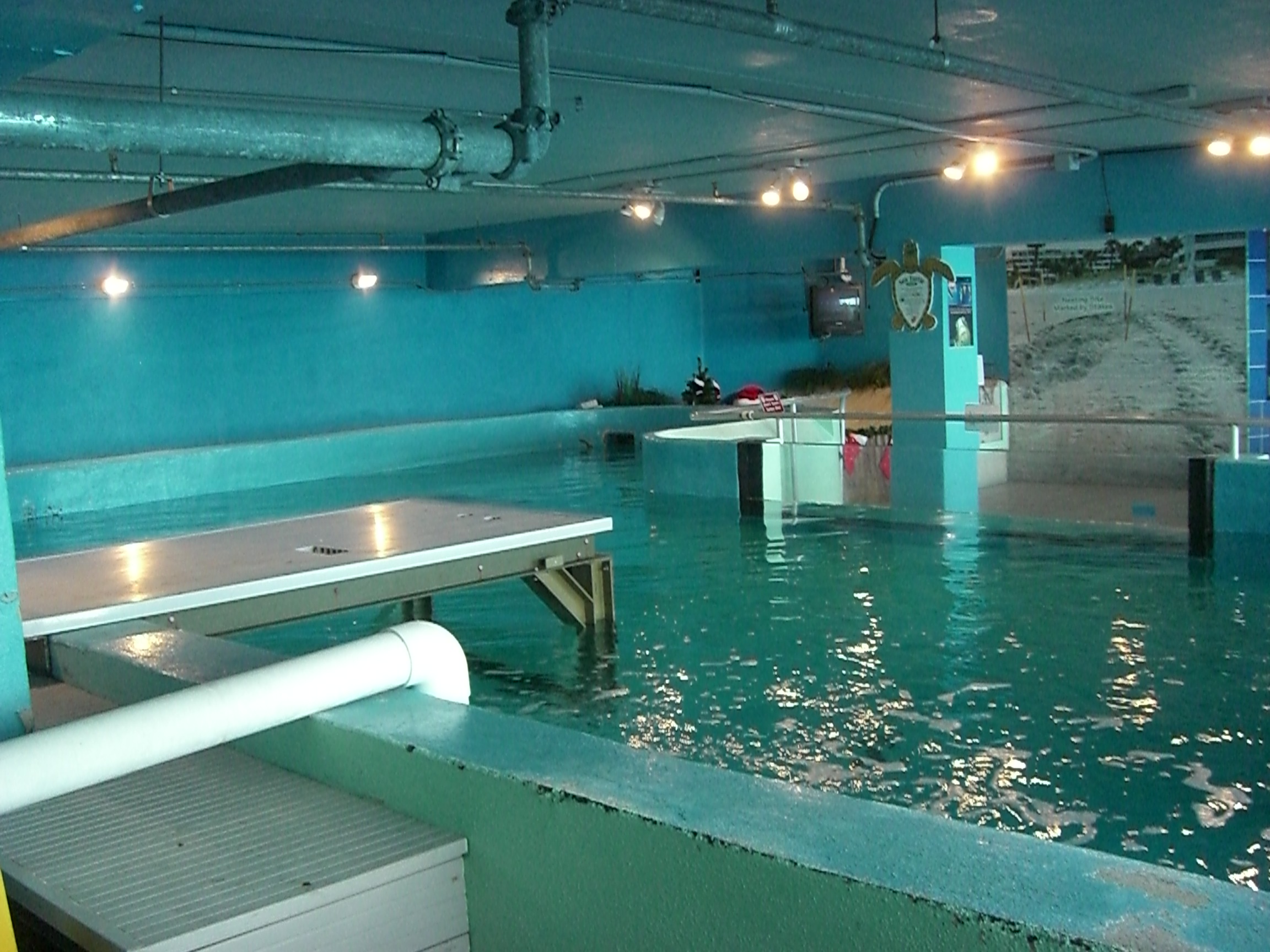
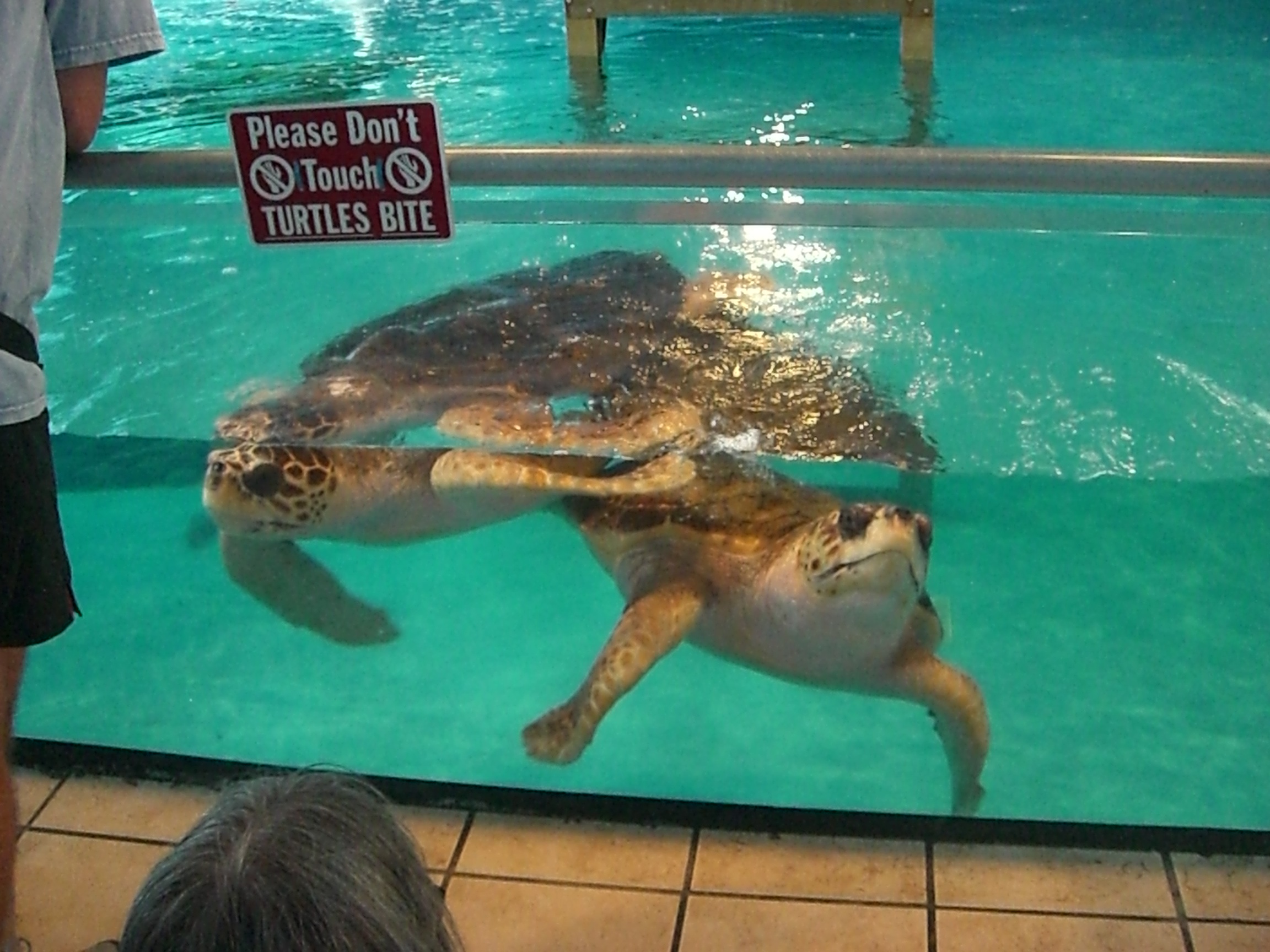
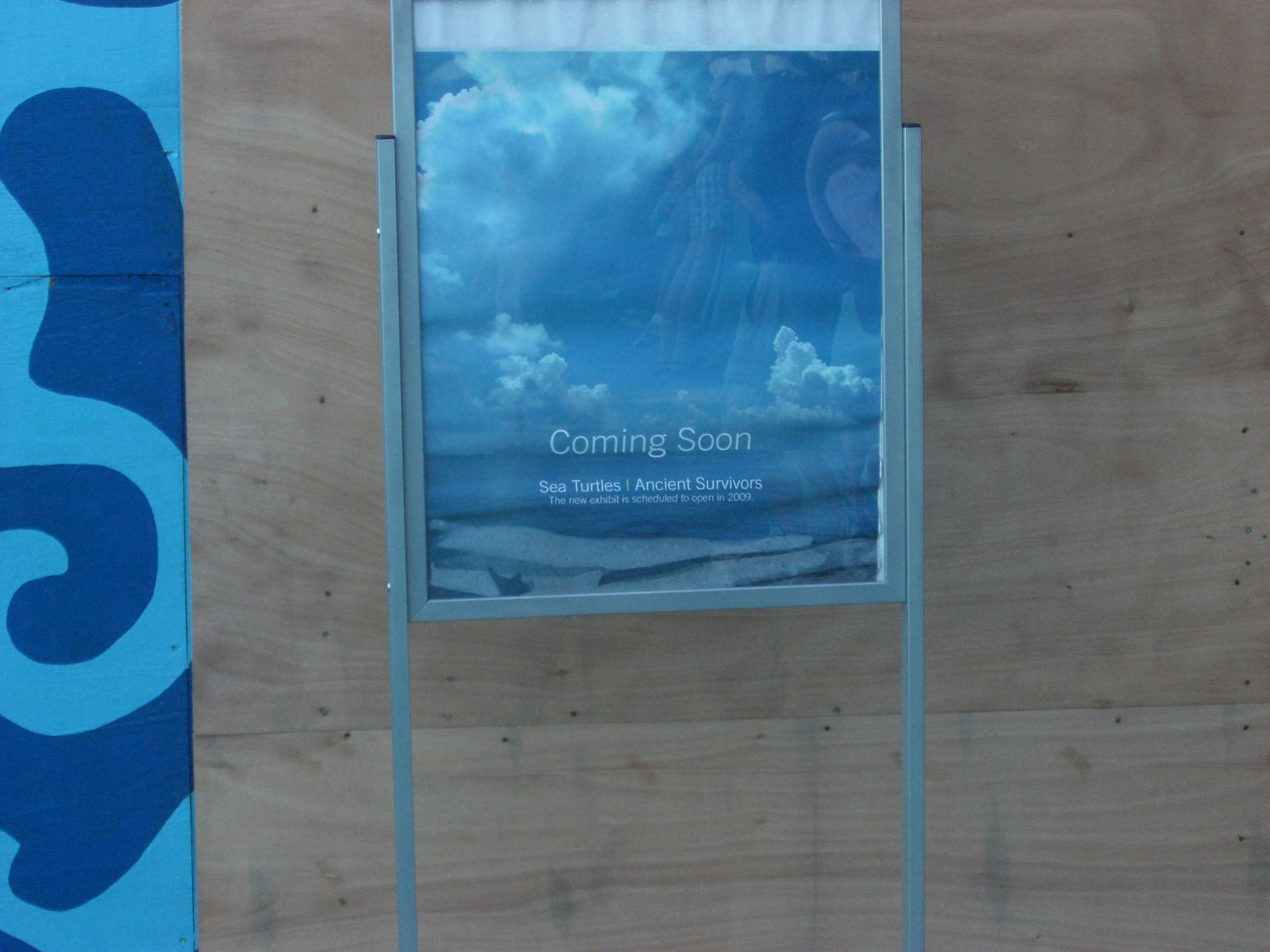
Finally, the manatees. In true Mote form, the manatee exhibit is a concrete box. This does not offend me as much as the water quality in the box. The water was so murky the manatee itself bumped into the window once or twice as we stood there. Although it appeared an additional pool, perhaps a holding or med pool, was adjacent and available to the manatees, the exhibit pool was very small for two critters. Three large windows allowed plenty of viewing, but the glare from the surrounding exterior windows, with some help from the milky water, made it nearly impossible to enjoy. Add the tiny pool, and the overall experience was rather depressing.
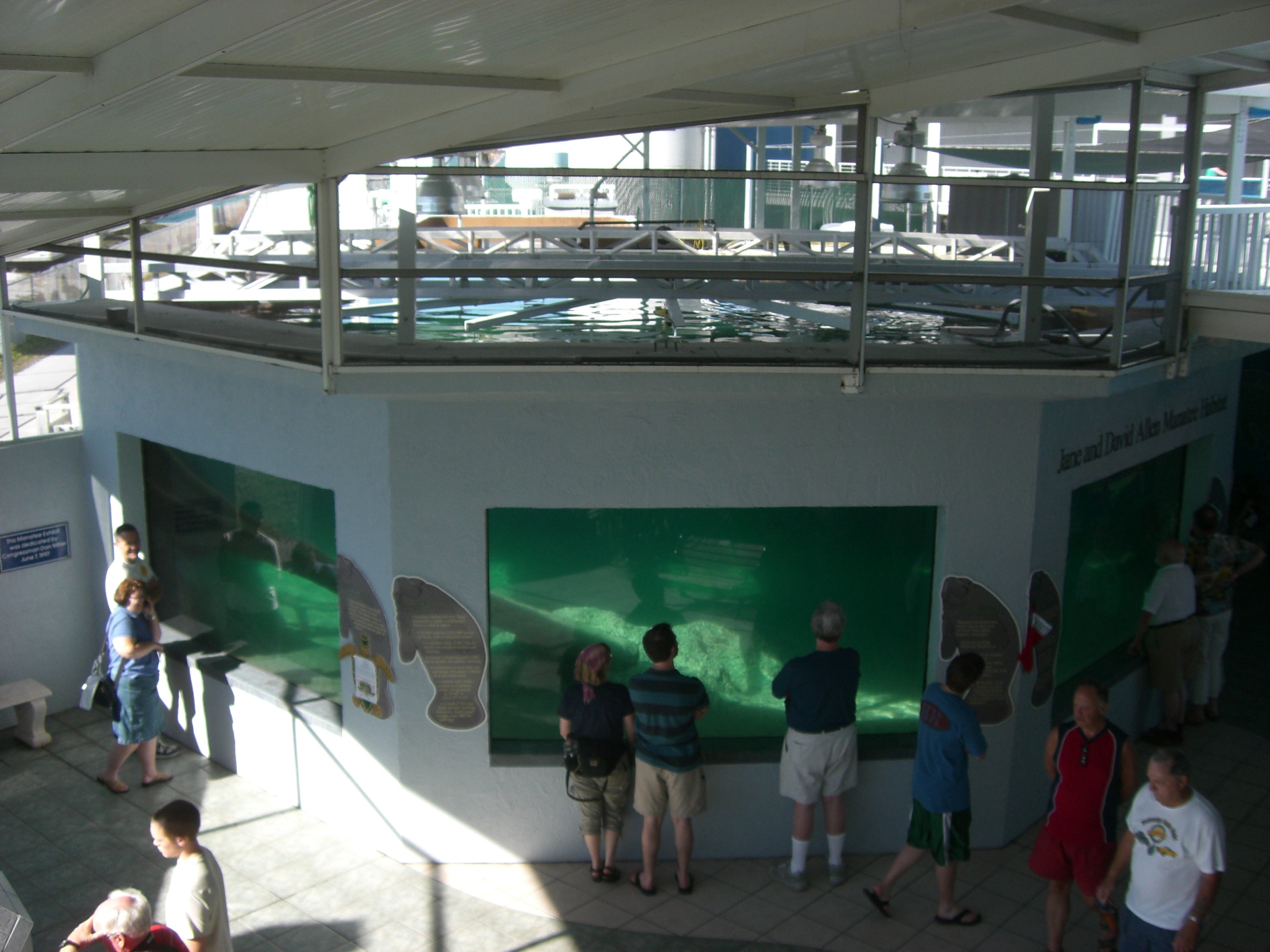
- Manatee Exhibit
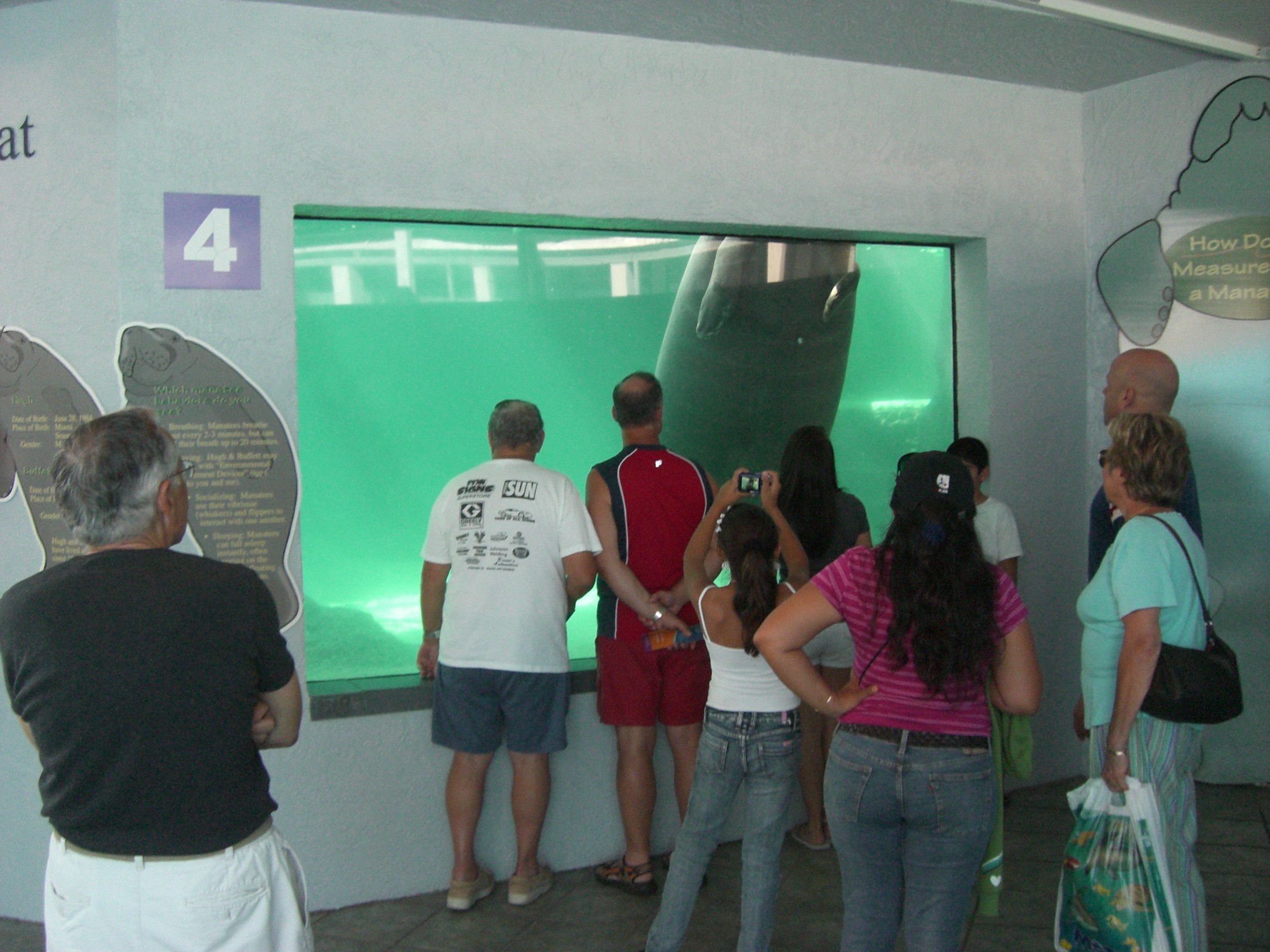
- Manatee at window
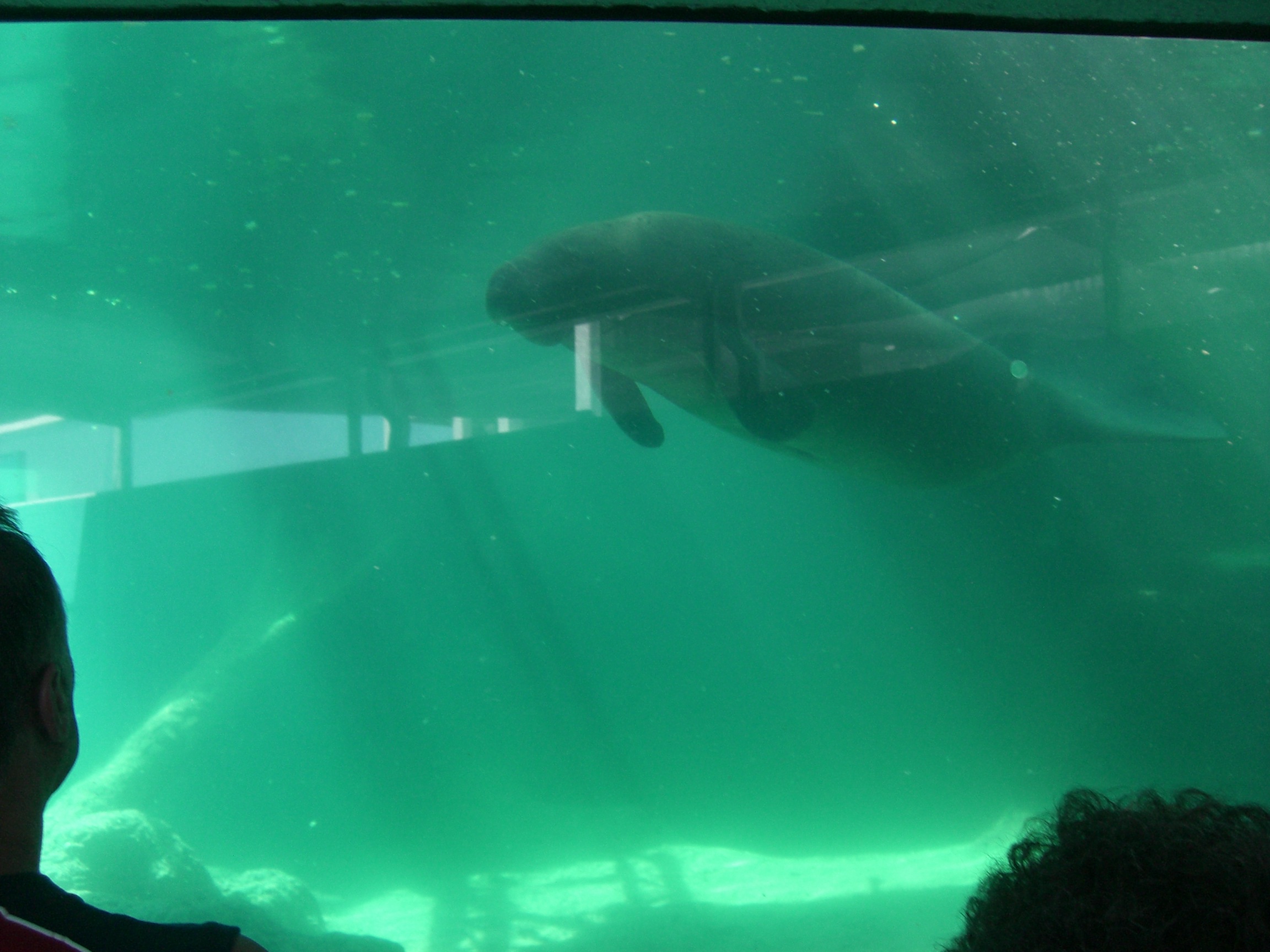
- Cloudy water and natural light equals "Is that the manatee?"
Overall, the Mote needs some help. Understanding that replacing and rebuilding exhibits is an extremely expensive process, I've put together the following Top Tips for the Mote Aquarium to increase its appeal and guest experience:
1. Clean up / Fix up!
This is the easiest and, surprisingly, sometimes, the most effective way to have immediate impact on the guest experience. Throughout the Aquarium, water quality was dank, acrylic was scratched, and signs were fading and falling apart. Take a few months and several thousands of dollars, and truly dedicate all resources to fixing and cleaning those things that are failing, or generally dingy. Fresh coats of paint in warm neutrals and soft earth tones, rather than the primaries, cool greys, and every-shade-of-blue-known-to-man currently used, would also quickly update the Aquarium into at least the year 2000.
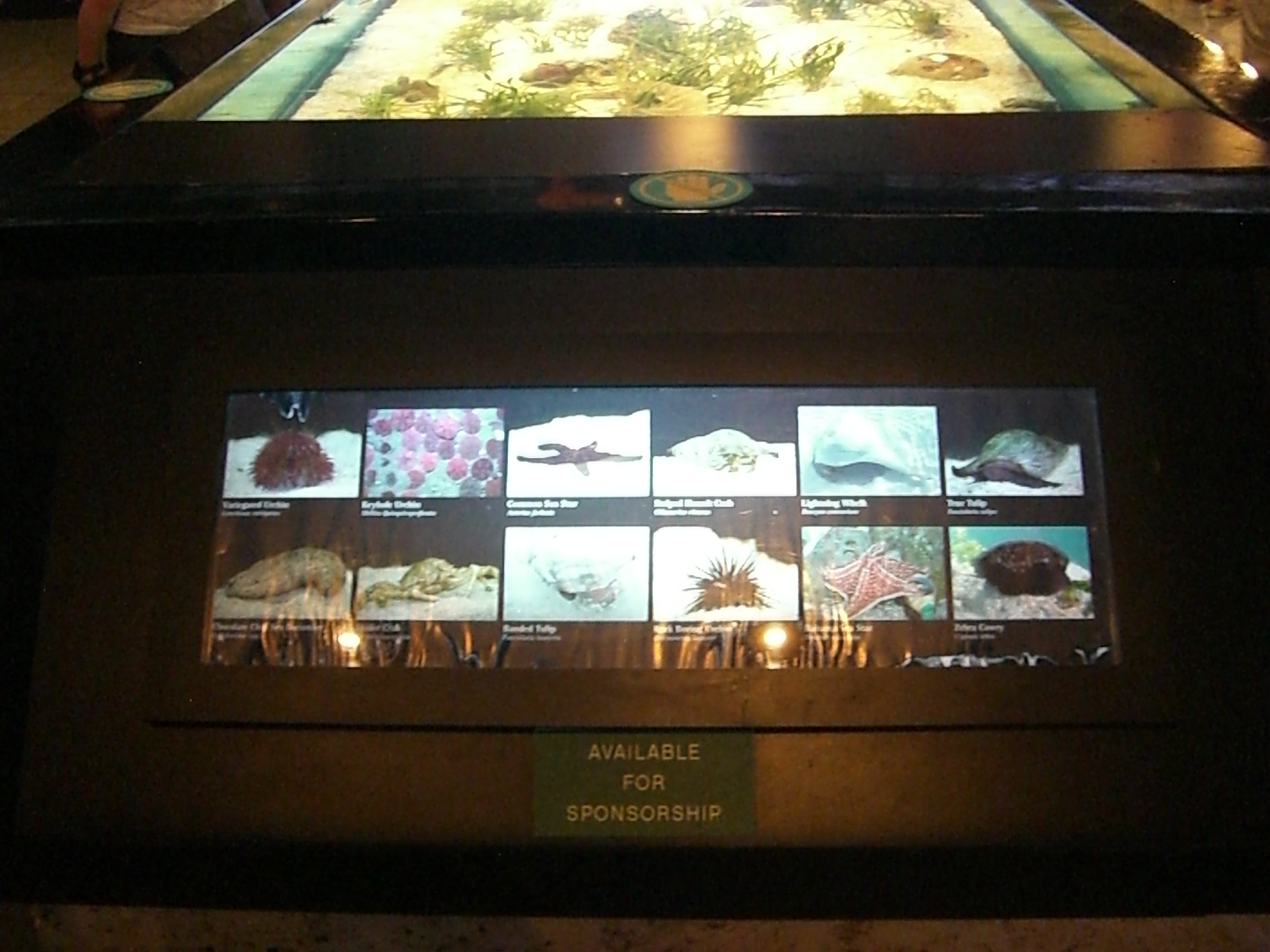
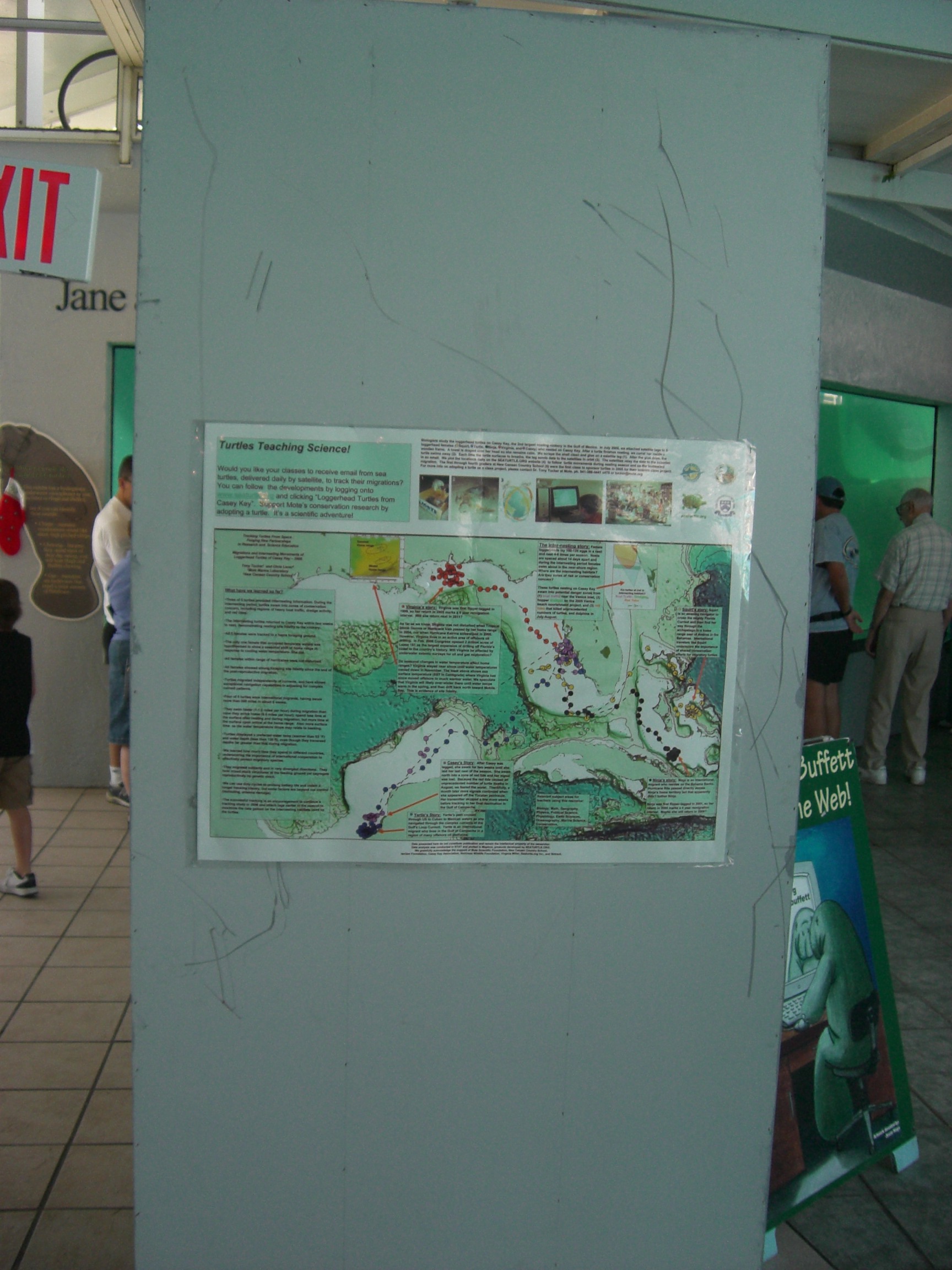
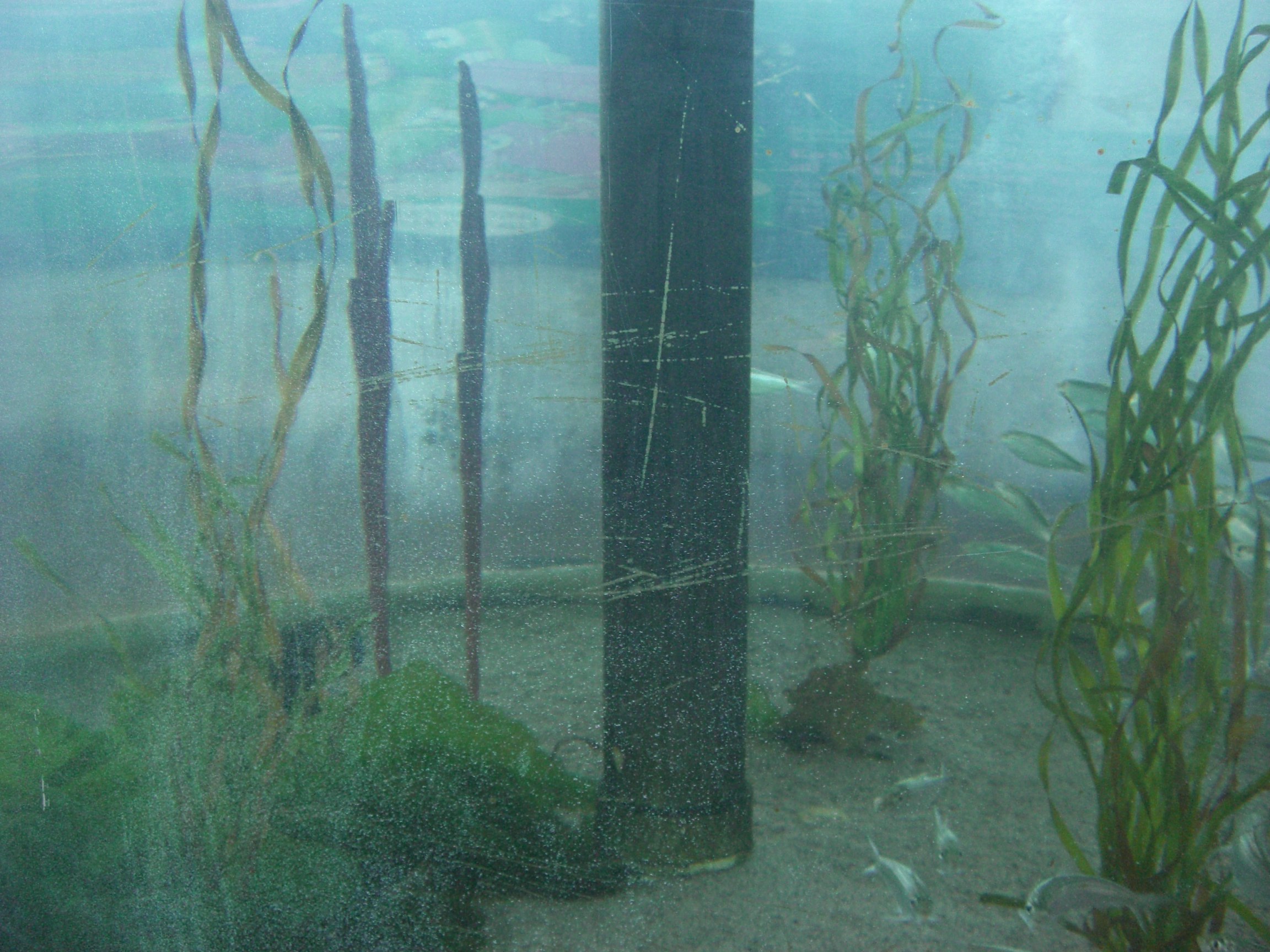
Additionally, make an effort to hide items that should be out of sight to guests, ie skimming nets, hoses, food buckets, as they were seen sitting in plain sight in several places. Buy a simple Rubbermaid closet and throw the junk in there!
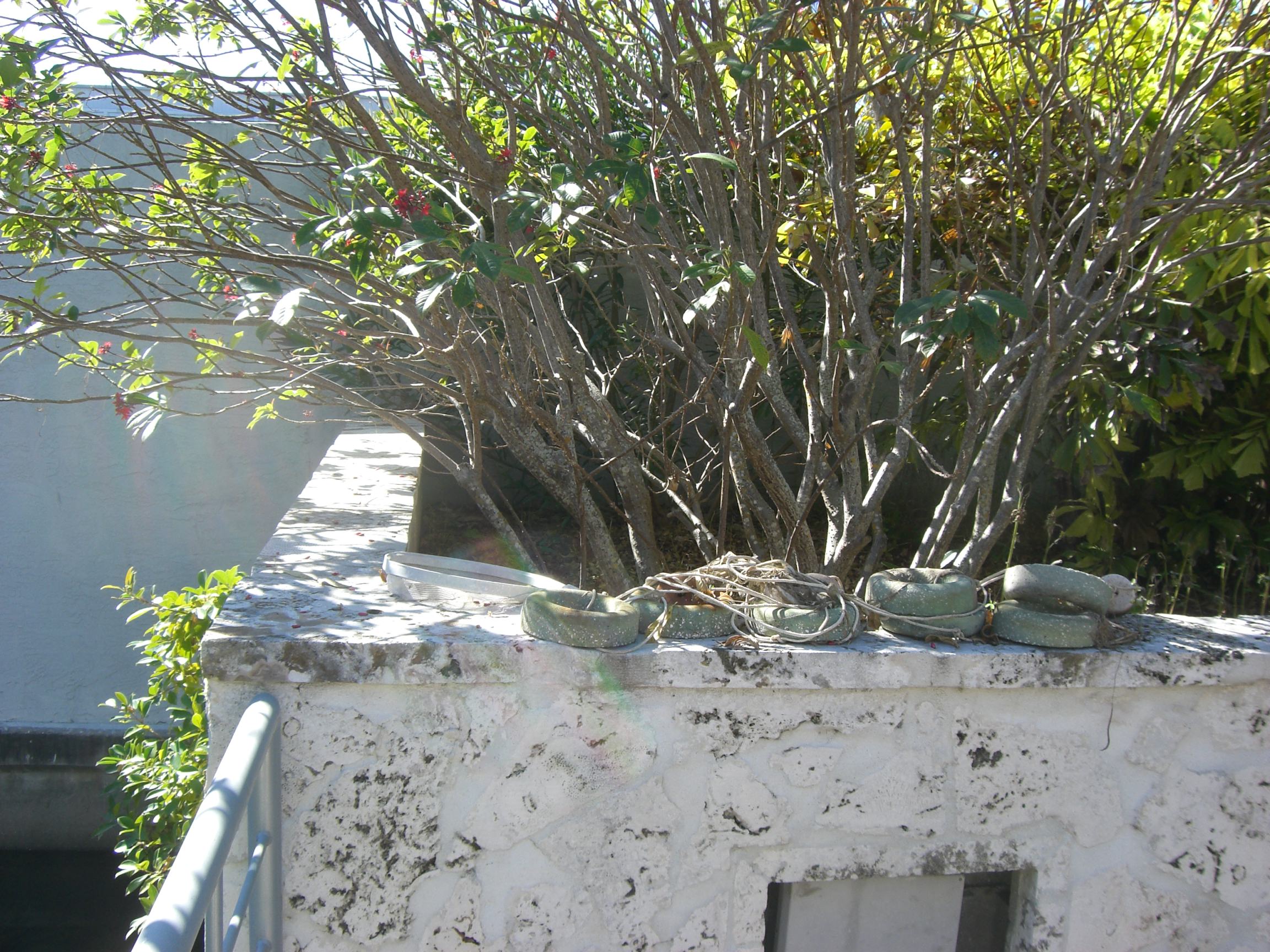
2. Invest in CLEAR Directionals
Understanding that a small aquarium generally serves a repeat customer base can mean the Mote Aquarium may be under the impression that directionals are not as needed as at, say, SeaWorld, which caters predominantly to tourists. However, without seeing their attendance demographics, I'd wager a bet that the Mote, being located where it is in Sarasota, Florida near a tourist shopping destination, is actually catering more to tourists than locals (or at least equally so). This means a large portion of the guests have never been to the Aquarium, and will, as we did, get lost and frustrated trying to locate a) the entry and b) the dolphins, sea turtles, and manatees, among other things. Mote, please, do yourself a favor...invest in signage, paving, and landscaping to help better direct your guests. And, take advantage of the walk between buildings with educational interpretives, or even just a dolphin topiary or two!
3. Invest in your possible Star Species
If you have little money, but want to increase attendance, profit or guest experience, always, always choose a star species to add / redesign / renovate. The star is marketable, even if the project is simply giving the animals a new home. Marketability means people will come, people will spend money on plush, people will tell their friends.
This may seem greedy, but what it means is an increase in revenue and hopefully profit, which means an ability to spend money on less marketable species who are really needing new homes, too.
Who am I suggesting for the Mote? Sharks! Sharks are the dangerous darlings of the sea. People love sharks; adults and kids alike are drawn to the allure of the elusive grey ghosts and respond to the element of fear instilled by the animals. Plus, renovating or adding to the dolphins doesn't make sense as they are already the Stars of the Aquarium, and guests are more than willing to make the trek to see them. Why not reward the guests for exploring the first building by elevating the sharks to Star status, then a Star species would anchor both buildings. Spend some money on this exhibit , Mote (How much you ask? Between $5 and 10 million), and I promise, you will see immediate results.
Mote Aquarium Overall Score:
